Education
- Details
- Written by: Quintus Potgieter

The youngest future engineer EIT encountered at the expo was a boy of fourteen who told us that he had an affinity for Mechanical Engineering. The most sought after qualifications were Electric Engineering, Mechanical Engineering, and Civil and Structural Engineering.
A handful of students expressed their desires to build car manufacturing companies, actively seeking programs that would provide automobile engineering training.
- Details
- Written by: Edwina Ross
Are you studying with the Engineering Institute of Technology (EIT) online for a Bachelors Degree or Masters of Industrial Automation? A Visitor Visa or a Working Holiday Visa would allow you to spend 3 – 4 months studying on-campus with the EIT in Perth, Western Australia.
For 3 or 4 months of your degree (depending on your eligibility for a visa), join the EIT team on-campus in Perth, Western Australia. Outside of your study time you can explore the stunning and unique parts of Western Australia and experience the lifestyle.*
EIT’s beautiful campus grounds are located in the heart of East Perth, minutes away from the Central Business District and within easy access to free public transport. Tourist attractions, shopping centres and the famous WACA cricket grounds are all close by.

Western Australia covers the western third of Australia. Its population is concentrated in its fertile southwest corner, home to the famous Margaret River wine region and the riverside capital, Perth. The Kimberley region is located in the north and is home to ancient Aboriginal rock art, the Bungle Bungle sandstone domes and Broome’s Cable Beach, camels and pearling industry.
For further information on this exciting opportunity please email us.
*Please note: studying on-campus in Australia for a period with EIT would entirely depend on your eligibility for a visa and the current unit delivery schedule. Please visit https://www.border.gov.au/Trav/Stud for more information.

- Details
- Written by: Quintus Potgieter

Paige Kassalen is a 24 year old electrical engineering graduate from Pittsburgh, Pennsylvania, who is making waves in the engineering industry. By the age of 22, Kassalen had been involved in a world-first solar plane project, and by 23, had been awarded a spot on the prestigious Forbes 30 Under 30 list.
The Engineering Institute of Technology sat down with her to marvel at her achievements, find out what drives her, and to talk about how engineering industries can do more to recruit females into Science Technology Engineering and Mathematics (STEM) fields. EIT is keen to encourage many more females in its practical online engineering bachelor and master degrees.
After graduating through Virginia Polytechnic Institute and State University, Paige was equipped with the problem solving skills necessary for starting the rest of her career. She believes that engineers are born with the ‘knack’ for problem solving. She says:
“The best engineers are the kind of people that have a passion for building something or creating something and have that drive for problem solving. That’s something that I had growing up; I loved to figure out how things work. I was happy that there was a field like engineering that gave me those tools that I needed to solve those real world problems.”

Intern to high-flier
Kassalen became a Process Control Technology intern at a company that supplies high-tech polymers named Covestro. From there, she became a commercial trainee, rotating throughout Covestro’s three business units.As an electrical engineer at a material sciences company it was an interesting change of pace, she said.
She was then asked to represent the company as a ground crew member for Solar Impulse, which was an initiative that aimed to fly a plane around the world powered only by the sun. Covestro was an official partner of Solar Impulse, providing both materials and technical expertise to the project.
“On the ground crew I had to be ready for any task that came up. You have to be ready for everything when you’re working on an impossible project.”
Being part of the ground crew responsible for keeping a solar plane on track, on a trip around the globe, was no easy feat. Kassalen tells of the intricacies involved with catching the plane by the wings when the plane landed. The solar plane’s wingspan was almost the size of a Boeing 747s wingspan, and the airplane had tandem wheels. Paige and the other members of the ground crew had to run alongside the airplane, and had to ensure the plane remained stable.

Her electrical engineering prowess was fully realized when she was one of four engineers who presided over the power systems of the mobile hangar where the plane was stored.
Within areas of countries without hangars big enough for the plane, the plane would have to be stored in an igloo-shaped mobile hangar. Setting up the mobile hangar took 10 hours, and 14 to 17 members to inflate.
Paige, and three other engineers, had to regulate the power systems that powered the fans that inflated the hangar.
To stay abreast of being thrown in the deep end of a challenging engineering project, Paige rolled with the punches and continued learning as the project charged ahead. She said:
“I spent a lot of nights on YouTube, making sure that I studied a lot of power systems or generators, just making sure that I wasn’t going to let me being a new engineer hold me back from being involved in the project.”
Women in STEM
Paige is a shining example of how gender inclusivity in the engineering world can lead to great things. She co-chairs with the Pittsburgh chapter of the Institute of Electrical and Electronics Engineers’ Women in Engineering affinity group. Whether or not the industry can do better for the gender gap, Paige says:
“We can always do better. I know that the opportunities for women in STEM are definitely growing exponentially. Even ten years ago the opportunities were very different.
I think it all goes back to the support - there are definitely so many men and women in leadership roles now that are supporting STEM.”
Paige believes that people should be more encouraging to women who are pursuing STEM careers. She recalls many a time when certain people at university assumed she was less than sufficient in a degree as challenging as electrical engineering. She reiterates:
“We definitely need to have a lot more gender parity when it comes to STEM fields because engineers will be designing for both genders and we want to have that input from women to make sure that we’re accommodating their needs.”
- Details
- Written by: Quintus Potgieter
Were you born to be an engineer? Were you supernaturally gifted with the skills necessary to become an engineer? Or can engineering be taught? If you have an innate skill for taking things apart and putting them back together again, you might have an engineer living inside of you.
However, the world today has made it clear that there are certain requirements that must be met when considering whether a person can become a qualified engineer or not.
Mathematics & Science
It is a common held belief that it is very difficult to break into the engineering world, to study engineering without the relevant mathematics and science qualifications.
In South Africa, in 2016, 265,810 candidates wrote the mathematics examinations. The pass rate for those exams was only 51.5%. The class of ‘16’s average for mathematics was 30.8%. The numbers reveal that many must have failed to bring the average spiraling downward. Physical science saw a pass rate of 62%, with a class average of 35%. The implications of such low numbers is usually that students either have to repeat their final year, or forge ahead and find a job in an industry with no matriculation certificate. Unfortunately, with a 30% mark for maths and/or science, finding a job in industries demanding these subjects may be difficult.

To apply for a Bachelor of Science (in one of the streams of Engineering), through the Engineering Institute of Technology (EIT), 50% for mathematics and 50% for physical science is preferable, but assessments are made on a case-by-case basis. Once a student is given admission to the institution, an engineering mathematics bridging course soon follows. This gives those who require it, the level of mathematics needed to graduate as a technologist first and professional engineer second.
The willingness to embrace mathematics and science education can, however, be daunting and can certainly be the decider for students selecting study options and careers. These subjects do present a barrier to promising engineers, a barrier which seems to be growing and as a result causing the industry some consternation.
Engineers Australia has reported that the number of students studying science and mathematics is “in a free fall”. It further alleges that less than half of Australia’s engineers were born in Australia - highlighting the country’s over-reliance on skilled foreigners. In response STEM (Science, Technology, Engineering and Mathematics) subjects are being actively encouraged by schools. STEM-influenced materials and equipment are flooding schools in the belief that students will be inspired and subsequently select those careers founded on these subjects.
The Dean of Engineering at EIT, Steve Mackay, says that students’ distaste for mathematics must be addressed early in their academic careers. He says that students lose their appetite at an early age (for a number of reasons) in what he called the “engineering valley of death”:
“Essentially, the concept is when the young adult gets to about 12 or 13 years of age they lose interest in STEM. There is a tremendous drop off. Then, when they get to 18 or 19 years old, there is only a small fraction of the school cohort that can actually go into engineering or scientific careers...which is a terrible shame.”
Apprenticeships
Whilst earning top honors for mathematics and science at school level often leads into engineering (among other industries), it is dangerous to suggest that those who are more technically gifted, and less theory-savvy, will never make it into the industry.
Select institutions provide students with apprenticeships - also known as learnerships. These opportunities offer alternate pathways into engineering. An apprenticeship educates a prospective future engineer on the more practical aspects of the industry.
In an interview, Chief Executive of the UK-based Building Engineering Services Association, Paul McLaughlin said that he believes apprenticeships will bridge the skills gap the UK is facing. He said:
“A vocational apprenticeship is just the first step on the journey to a fulfilling career. We are working closely with employers in our sector to develop and deliver apprenticeships at all levels -- from initial technician grades, right up to degree equivalence.”
Offering a variety of pathways to achieving engineering prowess is enormously sensible. We are, after all, living in a world that now regards study as a life-long endeavor. There is absolutely no reason why technicians, while they continue to work, cannot move up through the ranks and eventually achieve professional engineering status, if motivated to do so. Furthermore, their input along the way, no doubt, will be as critical to the wellbeing of society as their contribution will ultimately be.

Works Cited
"The Real Matric Marks." News24. 08 Jan. 2017. Web. 25 Aug. 2017.
“Engineers Australia Report Find Less Students Do Math and Science Subjects”. Herald Sun. 22 Mar. 2017. Web. 25 Aug. 2017.
- Details
- Written by: Evangeline Newby
Members of our EIT team attended the SkillsWest Expo this last weekend to show off our course offerings.
Our EIT stand showcased a clever robotic arm which visitors were invited to test and drive. We then put everyone’s names into a draw to win one of these mechanical arms - in kit form. We have now drawn a winner and are happy to announce that it is Toby Wallace from Busselton, Western Australia.
We thought that you may like to learn a little about our winner. Toby is in year 11 at school and has a career in engineering firmly in his sights. I think when you have read his story, you will agree that this young man will contribute ably to society and will strive hard to achieve his dreams. This is his story:
I have always been interested in machines and vehicles, most likely due to the fact that I grew up watching star wars, star trek, and playing video games about designing vehicles and using cool technology. When considering what career I would like to pursue, I realised that mechatronics, electronics and mechanical engineering would allow me to be one of the people who gets to build the awesome machines and robots of the future. I have always wanted to build something like an Ironman suit, and I realised that this is the industry that would allow me to do cool things like that.
As technology grows into the future, there is the potential for us to use it for good, but the potential to use it for evil is a major issue. I hope that working in this field will allow me to create devices for help and safety, rather than harm. I would love to work in designing devices for security, and to protect people when they undertake dangerous tasks.
I think it is most likely that I will end up working in a city, as there are very few opportunities for work in the country; however, I think country towns like Busselton will always be on my mind, and I would like to focus on developing devices for them too. One example of this is shark repulsion devices that would save many lives surfing in places such as the Margaret-river region.
Two major things have helped me get an idea of what I want to study. Firstly, I realised that it is possible to work in an industry shown in the movies I loved and in the video games I played; I realised that these weren't just fun, they were job opportunities. Secondly I realised that it is possible to study in many areas, you don't have to limit yourself to one very specific area. I'm planning to do some kind of mechatronics or electronics engineering, but also would like to do audio engineering, as music making is another of my passions. I also realised that some of the other areas I didn't want to miss out on, such as caring for endangered animals, could be done as part time volunteer work while I study and afterwards.
When Toby receives the kit for the robotic arm he will have some building to do, but then it is after all a good part of engineering – engineers create and build cool things. And hopefully he will have a heap of fun in the process.
We wish you everything of the best Toby. And thanks to all the Expo visitors – it was lovely to meet you.
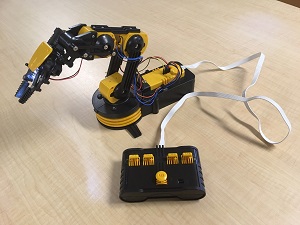
- Details
- Written by: Edwina Ross

Hadi Harb is a qualified Engineer, research scientist, consultant, and business owner. He lends his invaluable knowledge to the Engineering Institute of Technology as a lecturer too. His typical subjects are Programming (C++), Process Control, and sometimes he covers modules relating to data communication, and to anything involving data analysis and signal analysis. He also lectures on topics which touch on research and practice, and practical project management.
Originating from Lebanon, Hadi now lives in Barcelona with his wife and two daughters and enjoys a challenging work life. Apart from lecturing EIT student cohorts based around the world, he consults to a tech company in Japan on artificial intelligence and also runs a family business.
But how and where did Hadi start his journey in the engineering world? And how did he get the itch to forge his specific path forward in engineering?
School, university and beyond
“As a young boy I always liked math and physics. When I got to university, I really had no choice but engineering. Dealing with more technical aspects - it was natural to me,” Hadi recalls. “My school was in Lebanon in a city called Baalbek, an old Roman city. I was there until I was 18, then I went to the capital of Lebanon, Beirut, to study engineering for five years, equivalent to a Masters in engineering. The first three years there you study general engineering. After that, I specialized as an electrical electronics engineer.”
However, whilst Hadi was studying, he came to a fork in the road - he wasn’t sure what career steps to take next. Then he saw a television program where engineers were talking to a robot, and the robot was talking back. That was his ‘aha moment’, Hadi explains.
“So I decided that my final year project would be to control a robot using my voice. I built everything, and it worked, it really worked. It opened opportunities for me to continue my education in France,” he reflects.
He went on to do his Masters and PhD in computer science and was blown away by the capacity of computers. He became particularly interested in artificial intelligence. His focus was on classifying sound signals and detecting the gender of a speaker and the mood of a speaker with artificial intelligence as well.
Entrepreneurship
After finishing his PhD, Hadi worked for a year as a research engineer. He worked with teams whose goal was to classify music signals. Detecting if two songs are similar or not is referred to as ‘music and audio classification’. Basically genre specific music is cross-referenced with other genres and songs in an effort to find similarities with the source music.

“I co-founded a startup called Ghanni. It was about selling technology related to music, similar to the app Shazam. It was really early for this kind of technology so didn’t work extremely well, but it worked. We had some clients - some radio stations used our technology to provide smart radio services to their listeners. The business remained good and acceptable.”
But then Hadi experienced a devastating blow, to the company and personally. One of his colleagues died of cancer. As a result Hadi decided to dissolve the business. “It was sad, really. He was a great guy; 25 years old, he was working on his PhD, but died three years later. And since the business was struggling, I decided to reorganize and go to Barcelona,” he laments.
Reorganization
Hadi went back to basics in order to continue growing his career. He concentrated on the technical aspects of engineering and began to do consultancy in artificial intelligence. One of the companies he consults to is a Japanese company working on intelligent chatbots, similar to Amazon’s Alexa.
At a similar time he joined the Engineering Institute of Technology where he is involved in the education of their students in engineering. He says, “I am trying to share some of my experiences from the past as an engineer, as a research scientist, and as a business owner. I believe there are interesting things to share.”
Resilient entrepreneurial flair
Amazingly there is more: Hadi, together with his family, run Harb Farms in Lebanon. They create and supply several types of cheeses within the country. When asked, “Why cheese?” He explained that the agricultural region he and his family are from inspired their decision to set up a cheese making business. But he did add that they love cheese, “especially Mozzarella!”
Naturally it is interesting to wonder if his engineering background has assisted him with the family business. He believes it has had a significant impact. It allowed him to better organize the cheese making process, all the way from milk production through to the manufacturing of the cheese. He also felt that his research background helped him set up the early R & D and subsequently to improve traditional cheese recipes and adapt them to the market.
We at the Engineering Institute of Technology are very grateful to have Hadi Harb – an educator, entrepreneur and highly qualified engineer - sharing some of his hard wrought experience and knowledge with our students. And obviously we thank Hadi for allowing us to share a little of his life - a successful engineering life.
- Details
- Written by: Quintus Potgieter
“Going to university coincides with a period of immense change and personal development. We know that one in four young people are going to have an issue with their mental health. I just felt it was important to break the stigma attached to things like anxiety and depression.”
Those are the words of James Connolly, a student at the Australian National University. He was the president of the Students Association. He delivered a speech to students in March encouraging them to increase their awareness of mental health issues. According to The Australian, he admitted to the audience of 2,000 students that he suffered from depression and anxiety.

There are many reasons for why depression and anxiety are rife in universities. There is the weight on the pocket of the student paying fees and also the pressure of finding accommodation close to the university. Then there is getting to class on time and studying for that class test and exam. Being an upstanding student is a factor too; all are taxing on a student’s mental health.
The workload in a particular stream of study may be more onerous than in others; it is often the case for engineering students around the world. In an academic environment that demands the students’ undivided attention some mental health fallout can result.
“Australia and the rest of the world are finally starting to realize that ‘mental health means mental wealth’. Seventy-five per cent of mental ill health emerges before the age of 25 and if it doesn’t kill, it disables or reduces the human and economic potential of generations of young people. The personal, social and economical costs to human society are enormous - estimated to erode $16 trillion from the world economy in the next 20 years; double the impact of cancer.”
Those are the words of Benjamin Veness, one of Australia’s emerging leaders in health and public policy, writing on behalf of the William Churchill Trust. He compiled a report entitled: The Wicked Problem of University Student Mental Health. He has made contributions to the University of Sydney, highlighting the real threat of degrading mental health issues in universities.
International & Online
The Higher Education Statistics Agency (Hesa) in the United Kingdom has also published some worrying statistics. They reported that 1,180 students, who had mental health issues, left university in the 2014/15 academic year in the United Kingdom. This was a 210% increase on the 2009/10 figures when only 380 students dropped out of university due to mental health issues.

As more data is produced, and statistics calculated, institutions will no doubt find that steps will need to be taken to ensure students’ are able to ‘stay the course’.
It will be interesting to note how the changes in learning approaches and methodologies impact the mental resilience in students. Tertiary education and training continues to move towards the use of virtual platforms; in the future a vast number of students will be shunning lectures in brick-and-mortar institutions.
Bonny Barr of Creighton University believes that if campus-based students are anything to go by, support for online students is essential. She has published her opinions in the Online Journal of Distance Learning Administration said:
“Providing online student services is an important component of these distance programs and is often required by accredited bodies. Health and wellness services for online students are especially essential, as college students are accessing mental health services at increasing rates on college campuses.”
Barr writes that faculty of online institutions should look for any unusual behaviors from students who report to online lecturers, and of course, poor academic performance may be an indicator of emotional stress as well.
The Engineering Institute of Technology (EIT) is an example of a college which has adopted an online learning platform. To ensure students remain engaged; to counter any sense of isolation or indeed the sense that they are mere numbers in an institution, EIT uses a live, interactive approach to Online Learning. Their lecturers are streamed to students in real time and these teachers are available to discuss the content. They also employ dedicated Learning Support Officers to guide and encourage students through their courses and degrees.
Works Cited
Barr, Bonny. "Identifying and Addressing the Mental Health Needs of Online Students in Higher Education." Online Journal of Distance Learning Administration. State University of West Georgia. 1601 Maple Street, Honors House, Carrollton, GA 30118. Tel: 678-839-5489; Fax: 678-839-0636; E-mail:
"Home | Winston Churchill Memorial Trust." Home | Winston Churchill Memorial Trust. Web. 24 May 2017.
- Details
- Written by: James Mackay
14 Myths About Online Education with EIT
The world has become inundated with various myths regarding online learning, mostly due to the infancy of the phenomenon. EIT has become a major proponent in rectifying the detrimental rumours that still plague many undecided prospective engineers.
Below is a collated list of the top online learning rumours debunked:
Online Learning is only for People with Good Computer Skills

False! This myth is a perpetual fear for many students that have studied with us.
All you need to study is a computer, and a working internet connection. While up-to-date technology may certainly benefit your online experience, no real importance is placed on the hardware itself. The concern of technology is also synonymous with computer literacy, as EIT simplifies all the steps necessary to acquire the relevant course content.
Online Learning can Bear the Same Effect as Traditional Classrooms

True! You can receive the same, or even better experience from online learning
This statement may have been true approximately a decade ago, but we've far surpassed any previous inadequacies. EIT's online class sizes are smaller, hence students can experience far more interactivity with lecturers and Learning Support Officers (LSO).
The software utilised, Electromeet, is cutting edge, and designed to accommodate devices of any size and shape.
Online Study is for People who Couldn't become Uni Students

False! Online learning can often be viewed as more effective and convenient than traditional college courses.
Undertaking a university degree is understood to be the standard for many countries now, hence online up-skilling is mistakenly viewed as less prestigious. This concept is ironically not true, as online training with EIT now provides the practical experience that many universities fail to deliver.
Online Credits Will not Transfer to Another College

False! Online credits can transfer depending on the accreditation and course relevancy.
This myth is incredibly dependent, but it does have some legitimate foundations. Many colleges and training centres may not accept unit credits from foreign organisations.
Despite this, the accreditation on the course.
- Details
- Written by: James Mackay
A compilation of effective internet utensils available to all prospective and current engineers
Top Online Engineering Resources
A compilation of effective internet utensils available to all prospective and current engineers
1 – Symbolab
Symbolab is an online formula tool that computes a step-by-step process to finding a solution of a certain mathematical problem. They have won various awards for their efforts with assisting students globally.
2 – MATLAB
Most engineers probably know about MATLAB, but it is a worthy contestant as a top engineering resource. MATLAB allows for:
- Matrix manipulations
- Plotting of functions and data
- Implementation of algorithms
- Creation of user interfaces
- Interfacing with programs written in other languages, including C, C++, C#, Java, Fortran and Python.
3 – DraftSight
Draftsight is a quality freeware AutoCAD software for any prospective engineers. It lets you create, edit, view, and markup any kind of 2D drawing.
4 – ICEWeb
Disregarding the eyesore layout, ICEweb is an established website to provide Instrumentation, Control and Fire and Gas information for engineers globally.
5 – Science Daily
A personal favourite, Science Daily has many fantastic articles, spanning from “Tech” to “Enviro”.
6 – Reddit Engineering
The engineering Subreddits available are some of the best forums to share engineering related content, or ask any questions you may have for other engineers.
Each engineering field also has its respective subreddit, situated on the right hand side of the page.
- Details
- Written by: Quintus Potgieter
The world continues to deliver education and training via age old methods, despite innovation in almost every other sector. The tide is however turning, and it is gathering speed.
Instead of being reinvented it is merely being reshaped by a number of resourceful technologies which allow education to reach a wider audience, ranging from videos through to virtual interactive exercises.
Unfortunately these new technologies are often employed to the detriment of effective learning. The thrill of large student cohorts (and their money) is more often the driver than the delivery of useful education where learning outcomes are indeed achieved.
Some would describe technology in education as revolutionary and so be it; the results of a revolution can be extraordinary, but they most often cause an upheaval, particularly in the short term.
If technology is employed in education to enhance the experience it will succeed and will no doubt contribute to learning overall. The brilliance of a great teacher, fabulous materials and opportunities for student to ‘practice’, should not, however, be underestimated.

So enters blended learning and the synchronous methods of online learning. The first refers to the process of having students in class, but also having them present on virtual platforms, where extended learning occurs. The second refers to students in a virtual classroom in real-time, on a platform which is live and interactive.
The Analytics Boom
Education becomes more personalized with a blended learning system. Not only does it benefit students to perform certain tasks on a virtual platform but it also benefits the administration of education institutions as well.
Individual students can be tracked to see where they are going astray in their courses. After that, corrective measures, informed by accurate data, can be put into place to keep students on the path to graduation. A plethora of data analytics can be generated and perused by Learning Support Officers.
The internet, and the technology that utilizes it, have profound effects on the way education gets delivered in the 21st century - it is already being observed in certain schooling systems.
The School of One in New York understands that some students prefer being led by teachers, and others prefer digital instruction. Thus, the school tries to implement student preferences into several models, to the students’ benefit:
“With School of One, teachers are equipped with real-time data on student performance and students learn only what they are ready for and do not move on to more advanced material until they have mastered particular skills. This enables each student to have an engaging, meaningful, and highly personalized learning experience.”
Education as it should be
The education sector is moving toward a system that has personalized curricula based around the preferences of an individual student. This can be achieved with online sessions/courses offered over and above the core subject matter targeting everyone.
A writer for the Inquirer, Randy David, commenting on The Free Higher Education For All Act that was passed by the American Senate, wrote:
“When people go to university to improve their job prospects rather than to get an education, the whole purpose of higher learning gets distorted. Courses that are not “marketable” lose their appeal.”
Blended learning pioneers are coming to the realization that students may want the choice to build their own curriculum and take subjects and modules that fit their own interests and requirements for a job. They also recognize that they might want to progress at their own pace. This is achievable, to a degree, with blended learning, even more so with synchronous online learning and, although difficult, very much so with asynchronous online education.
Can blended learning continue on-campus?

Blended learning’s success hinges on the fact that students are able to function within a campus-setting attended by the benefits associated with that. They are also given the ability to be trained and educated through an online platform which offers flexibility and a learning platform that suits many students raised during this digital age. Most higher education providers are experimenting with this hybrid system, where traditional face-to-face learning and digital teaching materials coexist.
Brick-and-mortar universities have had to adjust their infrastructure to facilitate the hybrid system, such as campus-wide WiFi hotspots. Some universities are feeling the strain of bandwidth costs.
Sharon Moore, chair of the Association for College and University Technology Advancement (ACUTA) says that students on campuses are increasingly demanding when it comes to bandwidth. Every student needs the internet and every student wants it to be fast, reliable and constant.
“The ‘Internet of Things’ blizzard has descended on U.S. higher-education campuses, bringing with it unprecedented network challenges as student demand for bandwidth reaches new, higher levels every school year,” Moore said.
Their report showed that devices and apps used by students on their servers have become “more bandwidth greedy than ever”. They revealed that bandwidth consumption on college campus had “nearly tripled” since 2012.
And with universities being pressured to let more students in, more bandwidth consumption will be a reality. This will put a strain on the viability of blended learning applications on campus.
Login to the campus instead
The Engineering Institute of Technology (EIT) is therefore taking blended learning even further: students can access the campus and its engineering equipment and software from anywhere in the world.

The real world can be manipulated by the virtual world with EIT’s remote labs. The college has real laboratories that can be utilized simply via a web browser. Simulation programs essential to engineering training are also installed on the computers housed in the labs.
The Deputy Dean of Engineering, Steve Steyn, at EIT explains:
“You connect to a remote desktop in Australia. You take over the desktops in Perth. You experiment with software that has been preinstalled on those desktops. You can also control real equipment inside a real lab,”
In a live demonstration, Steyn showed prospective South African students how logging into the remote desktop allowed him to move a mechanical arm from the other side of the globe. A webcam feed of the lab showed how he altered the movements of the equipment.
The college is continually working on making the bandwidth requirements on the individual, when using the remote labs and simulation software, less demanding. Despite these efforts Steyn states that, as it is, the requirements on a student’s data cap are not too data-heavy.
Works Cited
"INQUIRER.net." INQUIRER.net | Philippine News for Filipinos. Web. 24 Mar. 2017.
"Supporting Edtech Innovation with NYC Schools." IZone NYC. Web. 24 Mar. 2017.
Growing BYOD, IoT Trends Fuel Higher-Education ResNet and Bandwidth Explosion
Yahoo! News. 2017. Web 24 Mar.
- Details
- Written by: Quintus Potgieter
Tertiary education is under threat in a world where uncertain political climates threaten the graduation and employment prospects of students. However, there is a silver lining in the sector which could in fact lead to more students studying towards a prosperous future. The internet.

The trigger that triggered the universities
The extent to which the political process is interfering with higher education is perhaps not being scrutinised more thoroughly than in the United Kingdom. On the 29th of March 2017, the Prime Minister of the United Kingdom, Theresa May, successfully triggered Article 50; the UK is officially on its way out of the European Union.
The two year long departure from the European Union will have negative consequences for higher education, the students, researchers and lecturers within it, experts say. They believe an isolationist government with isolationist policies may have unexpected outcomes for higher education. According to Universities UK, “Our future relationship with the EU has clear implications for universities in the UK.”
According to the group, being part of the EU had benefits: £1.2 billion in research funding, access to European Research Council grants and access to international research resources. These are very specific examples of what is likely to be forfeited with Brexit.
Overcoming borders and brick-and-mortar
Simultaneously, however, it is a time when opportunities abound. Countries with a robust education sector can potentially extend their offerings to students based in countries where education is less effectual or is too ‘far from home’ to access.
Andreia Inamorato dos Santos a research fellow at the European Commission’s Institute for Prospective Technological Studies (IPTS) delivered a keynote to European university heads at the Open Education Week 2017. She said that higher education was an important part of the political agenda.
She reported that European Union member states had to become technologically literate in higher education institutions. Through this, the EU wants to make education and training more accessible than ever. “It is one of the six new priorities for education and training for 2020,” she told the university heads. The European Commission wants to ensure Open Education becomes a reality.
What is open education?

Is it MOOCs (Massive Open Online Courses), is it completely free access?
Dos Santos admits that whenever you ask what open education is, you’re going to get a lot of different answers to the same question.
They define open education with what they call an ‘umbrella term’; all forms of open education fall under it. Their definition is:
A mode of realizing education, often enabled by digital technologies; aiming to widen access and participation to everyone by removing barriers and making learning accessible, abundant, customisable for all. It offers multiple ways of teaching and learning, building and sharing knowledge, as well as a variety of access routes to formal and non-formal education, bridging them.”
Digital technology transforms and modernizes education. For the United Kingdom, it could help overcome some of the barriers that are feared Brexit will build. It does, however, require a shift in attitude and approach.
“A lack of a strategy makes open education a bit more difficult,” dos Santos said.
Instead of isolated practices, universities should help open education up, Dos Santos said. And she maintains that that this requires planning, putting effective strategies into place.
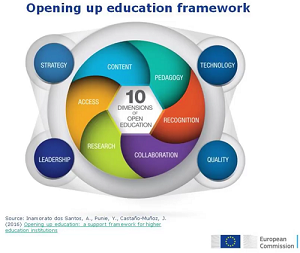
The Commission has set their project in motion, naming it the ‘Opening up education framework’, for already existing universities. The universities are encouraged to build strategies which make learning and training more progressive than ever. This thrust will inevitably include building already established online education and training platforms into on-campus universities. Thereby, allowing students - through the ‘opening’ of education - from around the world, to enjoy the same curricula as students in thriving European nations.
Works Cited
"Article 50: What Do Universities Want from Brexit Talks?" Times Higher Education (THE). 31 Mar. 2017. Web. 03 Apr. 2017.
"Opening Keynote - Andreia Inamorato Dos Santos (IS Unit, European Commission)." YouTube. YouTube, 12 Feb. 2017. Web. 03 Apr. 2017.
- Details
- Written by: Quintus Potgieter
Is the world finally ready to embrace the significance of technical and vocational skills and in doing so bump higher education qualifications off their pedestals and out of their ivory towers?
The government of the United Kingdom is certainly addressing this traditional imbalance.
They are introducing a new ‘T-levels’ system that will run alongside the customary ‘A-levels’, with a plan to implement it by 2019. ‘T-levels’ would prepare a student for further study in the vocational sector and a student attaining ‘A-levels’ would qualify to enter a higher education college or university.
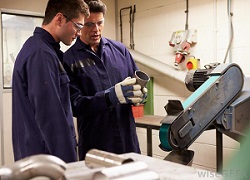
Credit: Wisegeek.com
Experts are hoping that technical and vocational qualifications will gain the reputation they deserve and ultimately achieve an ‘equal-footing’ with degrees which are attained in the higher education sector. It is being called the (long-awaited) ‘technical skills revolution’.
To ensure the reputation is indeed deserved and in order to raise the bar, students pursuing technical and vocational education will be exposed to 50% more study. To gain their qualification they will need to have completed 900 hours of training.
The system that exists today in the UK sees 13,000 individual qualifications being awarded in the technical and vocational sector. Philip Hammond, the Chancellor of Exchequer, who outlined the new T-levels in his budget speech, said that 13,000 qualifications in the technical sector was confusing to students. The government proposes a dramatic cut, with a focus on just 15.
These 15 credentials will cover catering and hospitality, social care, construction and engineering and manufacturing. The new system is hoping to address a widening skills shortage that some fear could be exacerbated by Britain’s exit from the European Union; a move which has now been passed by the UK Parliament.
Richard Black from the Telegraph writes:
“UK universities receive an additional 15 per cent in funding from the EU and some believe the UK could lose this if Brexit happens. It could also mean academics will struggle to cooperate on research projects. A change in visa arrangements for other European countries may also deter high-caliber academics from joining British universities.”
The UK is also encouraging students to apply for apprenticeships in their chosen industries. The UK government has plans to overhaul and improve the quality of apprenticeships with an apprenticeship levy that will see £2.5 billion making its way into technical and vocational sectors.
In addition the country is poised to launch the Institute for Apprenticeships in April of 2017. This Institute will ensure that apprenticeships maintain a level of quality, and create pathways which will enable students to progress.
Is less more?
Ireland’s education system is also undergoing change; they are redefining how their higher education system operates. The Higher Education Authority (HEA) of Ireland is reassessing how effective their engineering education and training is to ensure they remain relevant within a global context. Part of this scrutiny also involves refining the number of engineering qualifications that exist.
Dr Graham Love, the new CEO of the HEA, said that it is a challenging time for higher education, but is looking forward to shaping the future of the system.
“The review will examine the current state of engineering education provision in Ireland to establish if it is fit for purpose, efficient and effective and will make recommendations to better meet national skills needs,” the HEA told the media.
The review, according to the HEA, will also suggest new amendments for “apprenticeship models, professional development for working engineers, and teaching methods.” In accordance with Great Britain there is a concerted effort to raise the reputation and appeal of technical and vocational qualifications.

The right way forward
Emma Bridgewater, a renowned ceramics manufacturer in the UK, has said that the United Kingdom at large is suffering a skills crisis because the engineering syllabi fail to consider the needs of local students and the manufacturing sector. In an interview with The Guardian, she suggested that courses were designed to appeal to international students.
“A lot of vocational courses around manufacturing are evaporating - we are not training to future captains of the industry. There’s a very significant lack of the right courses being devised. I think that education is responding to the appetite among foreign students to study here.”
The unnatural tug of the higher education sector combined with the tempting foreign student market may have both contributed to the burgeoning skills gap. It is not surprising therefore, that engineering experts are optimistic about the proposed T-levels. The Chief Executive of the Federation of Master Builders told the media:
“T-Levels could be the answer if they genuinely rival A-Levels in the eyes of parents, teachers and young people. UK society as a whole has been guilty of putting too much emphasis on the academic route - this has made it more difficult for vital sectors like construction and house building to attract the talented new people we need.”
Works Cited
Black, Richard. "How Will Brexit Affect British Universities and will EU Students Still Be Able to Study in the UK? ." The Telegraph. Telegraph Media Group, 03 Mar. 2017. Web. 13 Mar. 2017.
Hickey, Shane. "'T-levels' Aim to Improve Technical Education and Improve UK Productivity." The Guardian. Guardian News and Media, 09 Mar. 2017. Web. 13 Mar. 2017.
"T-Levels Must Match A-Levels." T-Levels Must Match A-Levels. Web. 13 Mar. 2017.
- Details
- Written by: Sharne
EIT will be exhibiting at Career Indaba, South Africa’s premier further education and career guidance exhibition. The event attracts approximately 60,000 visitors annually and will feature over 60 local and international exhibitors.
If you have been considering an EIT program or have questions about our course options, who not come and speak to a representative? It’s free to attend!
You can visit us at stand 1A on 5th and 6th March 2017, Sandton Convention Centre, Johannesburg
You can learn more about Career Indaba and get a visitor pass here: http://www.careerindaba.co.za/

- Details
- Written by: Quintus Potgieter
Higher education is changing because governments are changing. The benefit from higher education, for the individual and the country, where the qualification is put to work, is invaluable. Building toward a brighter future for oneself, whilst growing an economy, makes higher education the main vehicle that drives up the potential of a country and its people.
Evolving governments need to secure the employment of professionals produced by higher education institutions to ensure their countries do not experience a brain drain, otherwise known as education immigration.
Graduates, who have acquired internationally recognized skills with internationally recognized qualifications, will naturally weigh up their options. Losing this expertise is a great concern to governments around the world.

President-elect Donald Trump’s education agenda remains to be seen, but he has chosen his Secretary of Education; a woman named Betsy DeVos. DeVos is allegedly a “billionaire philanthropist” with questionable experience in the education industry. With some power in the newly Republican Congress, education could become something quite new and compared to the system that has existed for the last eight years.
In the United Kingdom there is also some uncertainty. Prime Minister Theresa May has warned the United Kingdom that “Brexit means Brexit.” Experts have cautioned the changes to higher education will be irrevocable as the country gets closer to leaving the European Union. There is nervousness about the changing immigration laws following a Brexit.
The Guardian asked Sally Hunt, the general secretary of University and College Union, what she predicts will happen in the next twelve months. She said: “Sadly, I predict the Brexit related brain-drain of academics will gather further pace unless the government acts quickly to guarantee the rights of current EU staff and students to remain, and secures continued access to EU research programmes.”
This is what the former President of South Africa, Thabo Mbeki, lamented in 2015, “The number of skilled people and professionals our continent has lost over the decades is truly frightening.” He went on to say: “It is estimated that more African scientists and engineers live and work in the USA and the UK than anywhere else in the world.”
There are other issues which threaten the stability of higher education and the commitment of bright learners to study in their own countries. Students in the UK, for instance, have indicated that they might take part in fresh strikes to protest accommodation rent prices.
Similarly, South Africa could be facing another bout of protests in 2017. The top-tier higher education institutions in the country have opted to hike their fees by 8%. It was just such a threat which sent South African universities into an uproar in 2016, after which students began to demand free higher education.
The grade 12 class of 2016 in South Africa has said they expect the first year of their career-building tertiary education to be turbulent. Some experts fear that prospective students have already investigated studying abroad; a situation which will further exacerbate the country’s skills gaps in key STEM (Science, Technology, Engineering and Mathematics) industries.
More alarmingly, and another concern for students in African nations, is that many universities are not meeting higher education standards. Phillip L Clay, a professor of city planning at the Massachusetts Institute of Technology writes: While many African institutions have made recent strides and are well regarded, only four African universities outside of South Africa are among the world’s top 500 universities.
What does remain clear is that higher education institutions and governments need to remain on their toes, wherever they are. To be serious about securing and growing their countries’ economies they need to aim to provide excellence in education and ensure they retain the products of this education.
Furthermore, to succeed in this regard they will also need to make a concerted effort to embrace, as Joseph Aoun mentions in his article, Beyond the Limits of Traditional Learning, “……new teaching and learning innovations…….because they make higher education more customer-centric, have the potential to increase student retention, graduation rates and overall attainment.
Works Cited
"Higher Education Network." The Guardian. Guardian News and Media. Web. 06 Jan. 2017.
"Model for the Transformation of Higher Education in Africa - University World News." RSS. Web. 06 Jan. 2017.
"The Extent of Africa's Brain Drain Is 'frightening': Mbeki." The Extent of Africa's Brain Drain Is 'frightening': Mbeki. Web. 06 Jan. 2017.
- Details
- Written by: free-45-minute-online-engineering-webinars-continue-due-overwhelming-response
The Engineering Institute of Technology (EIT) and IDC Technologies have been running a successful series of complimentary 45 minute Engineering webinars. So far we have run 12 sessions which have had hundreds of registrations for each session.
Upcoming topics include:
- Troubleshooting PLCs - A toolbox of suggestions to look for in troubleshooting your PLC ranging from CPU, I/O Modules to communications
- 10 Tips for Tuning of PID Loops - A quick toolbox of tips and tricks when tuning process control loops which you can immediately apply to your work
- Essentials of Closed Circuit TV (CCTV) Systems - A quick summary of the Essentials of Closed Circuit TV (CCTV) Systems
- Troubleshooting Modbus Data Communications Systems - A quick toolbox of tips and tricks when working with Modbus communications systems
- Project Management Essentials - A quick summary of the essentials of project management
- Troubleshooting of SCADA and Data Acquisition Systems - A review of troubleshooting SCADA and Data Acquisition systems
- Routers and Switches - A quick set of suggestions when troubleshooting routers and switches based on the TCP/IP suite of protocols
See full details and REGISTER HERE: http://www.eit.edu.au/free-courses
- Details
- Written by: Quintus Potgieter
The winner of the James Dyson Award has been announced. The award was created to highlight the best of the best in industrial engineering product design. A 22-year-old student from Loughborough University named Will Broadway walked away with the highest honors for an industrial design that has the potential to save millions of lives around the world.
 Broadway is an industrial design graduate at Loughborough and has designed an "Isobar" that keeps vaccines at the right temperature when being transported. The device employs a chemical process that creates the perfect environment for the vaccines. It uses a propane burner to heat ammonia and water in a chamber at the bottom of the device (pictured left). Once the cooling is needed, the ammonia vapors are 'pumped' into the main chamber and keeps the vaccinations cold.
Broadway is an industrial design graduate at Loughborough and has designed an "Isobar" that keeps vaccines at the right temperature when being transported. The device employs a chemical process that creates the perfect environment for the vaccines. It uses a propane burner to heat ammonia and water in a chamber at the bottom of the device (pictured left). Once the cooling is needed, the ammonia vapors are 'pumped' into the main chamber and keeps the vaccinations cold.
"I make things every day for people who have everything. I wanted to make something for people who have next to nothing. It should be a basic human right, in my opinion, to have a vaccination," Broadway said.
The device has the potential to improve medical assistance in developing nations. The World Health Organization has reported that issues rendering vaccinations useless cause 1.5 million more deaths per year, worldwide. In developing nations, vaccines are kept cool using ice, which becomes impractical due to vaccines being completely frozen before delivery.
Broadway got the idea when he visited Cambodia and southeast Asia in 2012.
Soon he found the inspiration to create a portable refrigeration unit that would solve an issue he knew was a big problem in the world. Broadway has criticized price markups on medical products that could improve developing nations' health and has said he is not interested in making any money.
Experts have said the refrigeration unit will also be useful for blood donation and organ transplant applications. But what about the non-medical uses?
 Broadway says: "It's risky but there is potential for commercial cooling. It would be a great thing to take on a five-day trip where you have no power."
Broadway says: "It's risky but there is potential for commercial cooling. It would be a great thing to take on a five-day trip where you have no power."
As a result of winning the James Dyson Award for the UK, Broadway received £2,000, which he says he will be using to create further prototypes of the refrigerator. He will also apply for patents. He also goes into the running for the International Dyson Award, where £30,000 will be the prize money for the winner.
"I am so pleased that this technology can get a bit of the limelight. It was such an innovative technology in 1929 that was forgotten and taken over by electric refrigeration," Broadway said.
- Details
- Written by: Quintus Potgieter
Engineers...it’s time to talk about your feelings. Starting your career in engineering can be a daunting undertaking. Are you happy with how your engineering career is progressing? Are you afraid of your future in engineering? Are you considering studying something else? Are you coping with the workload? Is the money worth what you’re doing right now? Are you generally happy? These are the kinds of questions that would make someone working in engineering - or studying towards working in engineering - become introspective.
Manel Baucells and Rakesh Sarin, both engineers, released a book entitled Engineering Happiness: A New Approach for Building a Joyful Life. Their book focuses on the idea that if engineers have been able to engineer such amazing things that humans benefit from, could they not also engineer happiness itself? In the book, the engineers say they have created the fundamental equation of happiness. They write it as: HAPPINESS equals REALITY minus EXPECTATIONS.
Furthermore, in the chapter ‘Defining Happiness’, they write: “Happiness is composed of the momentary feeling that we all have when things are going our way, when the weather is beautiful, or when our favorite team just won the big game. And unhappiness is composed of the unpleasant feeling we all have when we get a bad grade or catch flu.” However, there is further puzzlement as to what would cause engineers to be unhappy. And, they’re using a term that is gaining in its seriousness.
They’re calling it the ‘quarterlife crisis’. A time in a millennial's life where uncertainty is a dominant feeling. Making the change from student life to working life in their twenties, and then feeling as if they have made the wrong job-decisions as they settle into their thirties, are the suggested causes of a quarter life crisis. Depression sets in soon thereafter, where the millennials feel trapped in an unhealthy situation of not enjoying what they have decided to do with their lives. Some may already be in their jobs and feel that there is no light at the end of the tunnel. Additionally, The National Survey on Drug Use and Health (NSDUH), United States, have reported that 8.4 percent of full-time college students aged 18 to 22 years old have experienced major depressive episodes.
Dr. Oliver Robinson as the University of Greenwich further delves into the relatively new-sounding quarter life crisis in his study: Emerging Adulthood, Early Adulthood, and Quarter-Life Crisis:Updating Erikson for the 21st Century. The study offers a window into what the different phases of a quarter life crisis look like. Robinson says that those going through the crisis might remove themselves from a situation that has them feeling trapped. The person then develops new commitments more relevant to what interests them. This is something an engineer who feels they’ve gone into the wrong job could potentially do. It is easier to find a new path in early adulthood than it is when you’re much older.
Robinson’s study has resonated with engineers online who have commented that the modern engineering industry has produced a handful of graduates who are uncertain that they truly chose the right engineering training. Another engineer, who has only been employed in 3 months, commented, saying: “It was the same for me and I’ve never had an engineering job until 3 months ago. I think it’s a 2-something thing and not industry specific.”
However, At the University of Waterloo, Canada, a group of researchers conducted a study on the mental health of their engineering students based on their classifications. The research was titled: Analyzing the Mental Health of Engineering Students using Classification and Regression. They compiled a questionnaire that was distributed amongst the students and subsequently based their findings on the results. The questions were set with consideration to guidelines provided by the Canadian Mental Health Association.
The researchers found that overall mental health was affected with the number of hours of homework students had. They also found that second-year students posted the highest mental health numbers, showing that they were the happiest. Electrical engineers were found to suffer from lower mental health scores due to the competitive nature of their programs. Whereas, system design engineering students had the highest scores due to the amount of teamwork involved and the flexibility of their curriculum. Moreover, women in engineering reportedly also had lower mental health overall. The lack of happiness for women in engineering could be tied to the male-dominated nature of engineering industries, where women may feel out of place.
At the end of the day, engineering studies and engineering workplaces are high-pressure industries that require responsible, steadfast and motivated people. The harsh reality is that some humans cannot deal with the pressure attached to engineering, and, as a result, experience the quarterlife crises. This year alone, there have been an unprecedented number of engineering student suicides. If you happen to be having suicidal thoughts here is a page of worldwide suicide prevention hotline numbers: HOTLINE NUMBERS.
On a lighter note, The Institution of Civil Engineers recorded a video that further encourages engineers to feel “happy” in their engineering workplaces. They are trying to lure more students in, showing that engineering can be fun. Despite being in serious workplaces, they want to show that human happiness can shine through it all. The video even has Sir John Armitt, one of Britain's most successful civil engineers who was very instrumental in the construction of London 2012 Olympics facilities that have now become part of the country’s infrastructure.
- Details
- Written by: Quintus Potgieter
Robotic process automation is another layer of automation that can be added to industrial operations, business and enterprise. It refers to a software component that automates a task that would have previously been done by a human. Companies would invest into these software packages to eliminate redundant tasks, using artificial intelligence modules that can learn and adapt to how an enterprise is run and supply data and analytics of a company. Engineers that own businesses would be able to automate processes that slow down the company due unnecessary labor. Businesses can now run efficiently with software that automates critical data production the businesses needs to keep going.
 An automation company named Redwood Software have compiled a report on robotic process automation that shows a growing market. Neil Kinson, Redwood's Chief of Staff said: "When we talk about robotics, we are no longer talking about basic machines that replicate human activity, an opportunity to re-imagine business processes and their interdependencies. We are no longer plugging in' dumb' machines, but integrating smart technology with built-in understanding of the end-to-end process and best practice.
An automation company named Redwood Software have compiled a report on robotic process automation that shows a growing market. Neil Kinson, Redwood's Chief of Staff said: "When we talk about robotics, we are no longer talking about basic machines that replicate human activity, an opportunity to re-imagine business processes and their interdependencies. We are no longer plugging in' dumb' machines, but integrating smart technology with built-in understanding of the end-to-end process and best practice.
Based on Redwood's research of companies that are eligible for automation integration, the results were as follows:
- 27% are using robotics
- 35% are actively looking
- 38% are curious or researching
- 67% plan on using RPA in the next 12 months
- 72% plan to leverage existing investment in ERP (enterprise resource planning) to drive further automation in the next twelve months
RPA robots can replace manual effort in jobs that would benefit from being automated so that people can get to the actual work. A company can save a lot of money by automating software processes that would have taken ten times longer if performed by a human. As we've recently reported, it has been proven that with more automated processes, employment in companies has actually gone up due to the need for skills in other places in a part of the company where automation cannot be integrated.
However, according to Redwood's report, 30% believed that implementing RPA would lead to job losses. The report deals with this uncertainty, saying: "Yes, there can be no denying that there will be some job losses, but there will also be a reappropriation of skill sets into other parts of the business."
In some cases, RPA robots will be filling the gaps in the IT market where workers are desperately needed. Frank Casale, founder, and chairman of the Institute for Robotic Process Automation told ZDnet: "RPA enables IT to get things done with less people. That savings can be floated to the bottom line of the company or IT can re-purpose that to fund strategic projects they wouldn't get additional budget for. We are seeing this happen today."
The rise of RPA indicates that the Internet of Things will be interconnecting both the robots that work in industrial operations and the business side of the industrial operation itself. No more crunching of numbers and estimating by human processes, it can all be done by RPA software that will be able to immediately tell an engineer what needs to happen to keep a project running.
- Details
- Written by: Quintus Potgieter
Amidst an Australian election and a British exit from the European Union, engineering has never been more relevant to politics. Engineering industries are the ones that keep a country running, and those industries need to stay afloat in uncertain political environments. We have recently reported on how important STEM-related industries and education is to the future of Australia's GDP. We have also recently focused on how a Brexit has forced engineering industries in the UK to link arms and negotiate the best possible deal in the EU-Exit. What is apparent in the current political climate, is that engineering is one of the more important societal mechanisms.
 Malcolm Turnbull has secured a second term as Prime Minister of Australia, along with the Liberal Party of Australia. During his campaign trail, he asserted that STEM subjects would be made compulsory for all students in Australia. The importance of STEM industries for Australia's economy has been made known - multiple times - in the lead up to the election. Price Waterhouse Coopers warned that if STEM industries faltered, Australia could see losses of up to $43 billion in the annual gross domestic product. Australia's engineering industries that have notably influenced policies within politics have been the liquefied natural gas industry and the clean, renewable energies market.
Malcolm Turnbull has secured a second term as Prime Minister of Australia, along with the Liberal Party of Australia. During his campaign trail, he asserted that STEM subjects would be made compulsory for all students in Australia. The importance of STEM industries for Australia's economy has been made known - multiple times - in the lead up to the election. Price Waterhouse Coopers warned that if STEM industries faltered, Australia could see losses of up to $43 billion in the annual gross domestic product. Australia's engineering industries that have notably influenced policies within politics have been the liquefied natural gas industry and the clean, renewable energies market.
The Dean of Engineering at the Engineering Institute of Technology, Steve Mackay, in the latest episode of his YouTube series, The Engineering News Network, spoke of how engineers could play a significant role in their respective communities. He said: "As engineering professionals, you really do need to get involved in politics, local community affairs from a technical, engineering point of view. You do have a major contribution to make, whether it's your local community, your little small village or town, whether it's working on the sewage works or helping with decisions of power."
 An example of engineers making decisions that could affect policy was seen in Europe in the last two weeks. In the current market of uncertainty, Siemens decided to halt any new orders whilst the aftermath of the Brexit referendum was measured. This cast a cloud of doubt on the future clean energy policies of David Cameron's government. Siemens eventually reversed their halt on new orders and have gone forward with engineering operations in the country. However, the decisions of engineers could have caused Britain to go through a tumultuous time in regards to keeping their clean energy policies in check.
An example of engineers making decisions that could affect policy was seen in Europe in the last two weeks. In the current market of uncertainty, Siemens decided to halt any new orders whilst the aftermath of the Brexit referendum was measured. This cast a cloud of doubt on the future clean energy policies of David Cameron's government. Siemens eventually reversed their halt on new orders and have gone forward with engineering operations in the country. However, the decisions of engineers could have caused Britain to go through a tumultuous time in regards to keeping their clean energy policies in check.
"You have to get involved because you as engineering professionals have something more than most of these people in these parliaments have and that is that you are considerably more objective in what you do. A lot of the parliaments are riddled with lawyers, accountants and people that perhaps don't have the necessary technical knowledge to make considered technical decisions. Obviously, engineers have got potential problems ; building nuclear power plants, contaminating water and things like that, that we need to avoid. But really, you do have a major contribution," Mackay concluded.
- Details
- Written by: Quintus Potgieter
The Hay Group division of Korn Ferry, a recruitment firm dedicated to supplying people and organizations with work advice, has conducted research into how much more engineers make than their peers. The study looked at 42,500 graduate engineers and students in 770 different organizations in the United Kingdom. The study found that those who had graduated with STEM  (science, technology, engineering, and mathematics) degrees earned 20% more than their peers. The study found that engineers and software developers were the highest paid STEM professionals in the UK. The average starting salary for a graduate was $34,208, however for engineering professionals, their salaries saw increases of 17%. Meaning engineering graduates could look forward to about $39,936.
(science, technology, engineering, and mathematics) degrees earned 20% more than their peers. The study found that engineers and software developers were the highest paid STEM professionals in the UK. The average starting salary for a graduate was $34,208, however for engineering professionals, their salaries saw increases of 17%. Meaning engineering graduates could look forward to about $39,936.
The top five countries that promise the best starting salaries after graduating from university are:
| Country of Graduates | Salary |
| Germany | $52,997 |
| United States | $47,711 |
| Australia | $46848 |
| Netherlands | $45,098 |
| United Kingdom | $34,236 |
Theoretically, every country's engineers should make 20% more than their peers. So all of the aforementioned salaries can be increased, however, there are many other factors to consider. The study illustrates this by saying an engineer in the United Kingdom would make more money working in London than they would in the West Midlands.
Where is the demand for STEM graduates in the UK? In the digital sector. Vivienne Dykstra, the global graduate practice leader for Korn Ferry said that the digital sector currently makes up 10% of the United Kingdom's gross domestic product and is sorely in need of STEM-graduates.
"This demand is being reflected in the salaries that newly qualified students can command. With digitally savvy talent at a premium, the graduate recruitment market is a competitive place. Employers need to look at ways to differentiate themselves. Alongside providing opportunities to develop and grow, it's critical businesses offer strong starting salaries to really stand out of the crowd," Dykstra added.
Thus, it depends on what kind of engineering you go into and where you get into it. Some branches of engineering make more money than other branches. And, if you're looking for employment and a big salary, being willing to relocate might also be something to consider.
Source: Korn Ferry
- Details
- Written by: Quintus Potgieter
South Australia is getting the push the rest of the world is in desperate need of. 25 primary schools will be the first to get a host of new upgraded science, technology, engineering, and mathematics equipment in November. The hope is that the new equipment will inspire children to continue to pursue STEM careers later on in life. The funding for the project will top AU$250 million and will be coming out of the State Budget. 77 primary schools and 44 high schools will reportedly see upgrades to their STEM labs once the project is complete.
 Every primary school gets up to $1 million, whilst every high school gets up to $2.5 million. The move comes at a time where Australian education has been criticised for its recent poor mathematics results. According to Adelaide Now, some schools will be constructing classrooms with the money and others will be using the money to upgrade equipment needed to teach STEM-related content to students. The website says this will include "robotics labs, laser cutters, 3D printers, web cameras, touchscreen TVs" and spaces for civil engineering construction projects. Looks like we've got the next wave of successful engineers coming our way.
Every primary school gets up to $1 million, whilst every high school gets up to $2.5 million. The move comes at a time where Australian education has been criticised for its recent poor mathematics results. According to Adelaide Now, some schools will be constructing classrooms with the money and others will be using the money to upgrade equipment needed to teach STEM-related content to students. The website says this will include "robotics labs, laser cutters, 3D printers, web cameras, touchscreen TVs" and spaces for civil engineering construction projects. Looks like we've got the next wave of successful engineers coming our way.
"These schools are overdue - they deserve this. We need robotic equipment, we need technological equipment, we need electronics and facilities that can ignite children's enthusiasm about STEM (courses)," said Dr. Susan Close, Education Minister.
The move could curb the amount of children who retain an interest in engineering and avoid the engineering spiral of death. The spiral of death is when a student loses interest in engineering before high school and cannot recover the love for engineering, which potentially hurts their future employment prospects. The other worry is that there are not enough teachers in Australia who cater to STEM-related fields.
In addition to the 250 million project, the Australian Academy of Science is in the process of implementing a ten-year plan to implement mathematics after the Australian Mathematical Sciences Insitute reported that only 14 percent of Australia's STEM degrees have maths as a prerequisite for students. PWC Australia also recently published a report that said if STEM was not focused on soon, Australia could lose AU$57.4 billion in gross domestic product in a year.
- Details
- Written by: Quintus Potgieter
Structural engineers work in the field of analyzing structures. They are the hunter-gatherers of finding forces, stresses and deflections that all work towards building a strong structure. They also study the design of structures. They will know which materials work best and how they need to be positioned to ensure that a structure doesn't come tumbling down. This means analyzing the distribution of load in a structure. The functionality of a structure also needs to be considered so that it is not built in a place where it does not serve a function.
There are also design principles in structural engineering. Once again, choosing which materials a structure will be able to stand on is imperative. The engineer needs to think of the most efficient building materials that will ensure a sturdy structure. The structural engineer needs to focus on the safety of the project as well.This is something that wasn't done in South Africa in 2015. On October 14th, a temporary steel structure came crashing down onto a busy M1 freeway in Sandton, Johannesburg. It was said that a strong westerly wind caused a collapse. The collapse killed two people and injured 19.
 Now, months later, the results of an investigation into the bridge collapse is being made available to the media. The company in charge of the build was an engineering and design construction company named Murray and Roberts. Professor Roelof Mostert, the head of the department of material science and metallurgical engineering at the University of Pretoria has issued his report of what happened to the structure based on his investigations.
Now, months later, the results of an investigation into the bridge collapse is being made available to the media. The company in charge of the build was an engineering and design construction company named Murray and Roberts. Professor Roelof Mostert, the head of the department of material science and metallurgical engineering at the University of Pretoria has issued his report of what happened to the structure based on his investigations.
"Essentially, the structure appeared to separate at the median supports. That is the center of the highway, where the lattice girders on the eastern side remained stationary for a while but the lattice girders on the western side moved towards the west and separated from those on the eastern side and landed on the road," said Gregory Harington, a structural engineer, speaking to Moneyweb about Prof Mostert's report.
The report further said that the swivel clamps used in the operation were not able to keep both sides of the scaffolding upright. The swivel clamps were supposed to connect scaffold tubes together. But, a collection of older clamps and newer clamps led to the structures collapse. The older clamps had a kind of thread that led to less clamping force. The force of the wind was too much for the clamps to handle, and due to the lack of tightening on-site, the temporary structure collapsed. The professor is saying "poor workmanship" led to the collapse, along with the strength of the wind.
Video Source: Moneyweb
- Details
- Written by: Quintus Potgieter
The Economics and Statistics Administration within the United States' Department of Commerce have sent out their report titled Women in STEM: A Gender Gap to Innovation. The report alludes to what multiple reports in the first six months of 2016 have alluded to -- there are not enough women in science, technology, engineering and mathematics workforces. The Economics and Statistics Administration have crunched the numbers and have provided a clear picture of how big the STEM gender gap is.
According to the report:
- Although women fill close to half of all jobs in the U.S. economy, they hold less than 25 percent of STEM jobs. This has been the case throughout the past decade, even as collegeeducated women have increased their share of the overall workforce. Women with STEM jobs earned 33 percent more than comparable women in non-STEM jobs – considerably higher than the STEM premium for men. As a result, the gender wage gap is smaller in STEM jobs than in non-STEM jobs. Women hold a disproportionately low share of STEM undergraduate degrees, particularly in engineering. Women with a STEM degree are less likely than their male counterparts to work in a STEM occupation; they are more likely to work in education or healthcare.
- Women hold a disproportionately low share of STEM undergraduate degrees, particularly in engineering.
Source: http://www.esa.doc.gov/
 The results are even worse in India. Kelly Services, a global workforce staffing industry who specialize in engineers and accountants, have released a report titled Women in STEM. The report indicated that 81 percent of women who have STEM jobs in India quit their jobs 10 to 15 years into their careers.
The results are even worse in India. Kelly Services, a global workforce staffing industry who specialize in engineers and accountants, have released a report titled Women in STEM. The report indicated that 81 percent of women who have STEM jobs in India quit their jobs 10 to 15 years into their careers.
The report reinforces the sentiments of a recent report by Engineers Australia that showed that the women who do make it into engineering workforces usually leave within 10 years. The report also shockingly stated that one percent of Australian women past the age of 50 years old are currently working in the engineering industries.
"To begin closing the talent gap, we must create an inclusive environment that facilitates greater engagement and retention of females in STEM. We must make it a priority to eliminate bias and barriers, to deliver top-down support and institutional accountability," Kelly Services said.
One of the reasons the Deccan Chronicle gives to make sense of the grim statistics in India, is that women in India find it difficult to balance both taking care of family and managing employment at the same time. The website defines this as the 'double burden syndrome'. Other reasons for drop-out numbers around the world are directly related to gender bias and gender discrimination within engineering industries.
What is the way forward for getting more women into STEM careers? Kelly Services writes that mentorship and increasing diversity levels. The raising of diversity scores in tertiary institutions was recently celebrated after Dartmouth College produced more female graduates than men graduates. In 2016, in Dartmouth engineering courses, female attendance made up 54 percent of the class.
Making a diverse workforce in engineering still has a long way to go in the global context, however, any progress is progress.
- Details
- Written by: Quintus Potgieter
The Association for Advancing Automation has released a white paper that deals with how robotics is fueling the next wave of productivity and job growth in the United States. Some industries are experiencing the robot revolution first hand, where industrial robots are starting to take jobs away from humans. Automation in industrial sectors is constantly improving the efficiency of several manufacturing industries The white paper calls the recent development in robotics an "integral part of manufacturing's redemption".
The National Association of Manufacturers says that in the United States, the manufacturing industry employs 12 million Americans, representing 9% of the country's workforce. What the Association found was that in 2001, when industrial operations started seeing more robotics involved, employment rose. Similarly, in the years 2010 to 2014, the amount of robotics the U.S. bought skyrocketed, however, employment numbers actually rose. The concern being that more robots being sold would equate to more retrenchment, but the opposite has been true for the United States.
The Association for Advancing Automation said: "There are three important trends that must be examined to clarify how robotics is shaping the U.S. manufacturing industry: the reversal of offshoring, the use of automation for repetitive and dangerous tasks, and the domestic shift to a service economy. The industry also has an opportunity to impact future growth through new education initiatives."
 Using automation in manufacturing operations has ensured that some companies stay afloat due to the efficiency of the robots. The white paper quotes a Drew Greenblatt, a CEO and owner of Marlin Steel. He says that automation has had a positive impact on his company. He has apparently doubled his workforce and employed engineers in his company since going automated. Allowing automation to take care of the repetitive task and letting humans work on higher quality work has saved his company from bankruptcy.
Using automation in manufacturing operations has ensured that some companies stay afloat due to the efficiency of the robots. The white paper quotes a Drew Greenblatt, a CEO and owner of Marlin Steel. He says that automation has had a positive impact on his company. He has apparently doubled his workforce and employed engineers in his company since going automated. Allowing automation to take care of the repetitive task and letting humans work on higher quality work has saved his company from bankruptcy.
Even Deloitte got in on the action of measuring how technology is apparently stealing our jobs and found similar results ; automation has created more jobs than it has destroyed. The researchers studied every level of automation that stretched as far back as 1871.
"The dominant trend is of contracting employment in agriculture and manufacturing being more than offset by rapid growth in the caring, creative, technology and business service sectors. Machines will take on more repetitive and laborious tasks, but seem no closer to eliminating the need for human labour than at any time in the last 150 years," the researchers said.
The Association for Advancing Automation concluded the current problem with education as a result of automation. They wrote: "The majority of the careers that the skilled labor force has been seeking in recent years are service-related, which suggests a harsh reality: Manufacturing is no longer one of the nation's most coveted career paths for those entering the workforce."
And that is their warning to students. Their warning is that if people want to work in the service-related fields they will find that automation and robotics are slowly taking over those industries and are not beneficial to try and get into anymore. Rather a STEM-focused career path that teaches you skills that an automated process won't be able to replace.
Source: Robotics Tomorrow
- Details
- Written by: Quintus Potgieter
Online education has grown in leaps and bounds in the last decade. However, the legitimacy of gaining an online tertiary degree has been questioned by several employers all around the world. The issue being that the trusted universities sometimes don't offer their most important courses online. What we're left with are online speciality courses that don't hold much water in the world of employment, but are encouraging to an employer, granted you have a degree from a respected university that you physically attended. However, the legitimacy of online degrees is finally beginning to become visible to high-ranking universities.
 Experts agree that online education's feasibility in securing employment will be happening in the next five years. According to a report by the BBC, due to the successes of initiatives like Coursera, full degrees could make their way to the internet. Coursera offers short courses from the world's top universities, namely, MIT and Stanford. However, Daphne Koller, chief executive of Coursera says that undergraduate degrees could be happening within five years time. The platform currently has 20 million students registered and the list of universities that contribute now sits at 145 universities.
Experts agree that online education's feasibility in securing employment will be happening in the next five years. According to a report by the BBC, due to the successes of initiatives like Coursera, full degrees could make their way to the internet. Coursera offers short courses from the world's top universities, namely, MIT and Stanford. However, Daphne Koller, chief executive of Coursera says that undergraduate degrees could be happening within five years time. The platform currently has 20 million students registered and the list of universities that contribute now sits at 145 universities.
"Will it be fully online? Or will it have some residential components? That remains to be seen," Loller said. "It's the perception we need to break, it's not the technology that's been the barrier."
In the upcoming years, we will see more and more online degrees being announced by several different institutions. Recently, the Engineering Institute of Technology announced that they had been given the green-light to host four engineering degrees that can be studied online. The institution will be providing three-year BSc (Bachelor of Science) programs in: Mechanical, Electrical, Industrial Automation and Civil/Structural Engineering.
"They've got some enormous opportunities [for students]. They're online, we have a dedicated learning coordinator, highly experienced instructors as characteristic ingredients of this program," said the Dean of Engineering at the Engineering Institute of Technology, Steve Mackay. "The idea is that if you've done an advanced diploma or a diploma you will get some credits towards the BSc."
 Mackay says the BSc will allow you to practice as a technologist, which you can then take further and study a masters degree to become a full-blown engineer. He also says that after a lot of work the institution was able to get the degrees accredited and are looking forward to seeing student enrollments from Australia and the 130 other countries they offer the degrees to.
Mackay says the BSc will allow you to practice as a technologist, which you can then take further and study a masters degree to become a full-blown engineer. He also says that after a lot of work the institution was able to get the degrees accredited and are looking forward to seeing student enrollments from Australia and the 130 other countries they offer the degrees to.
For further inquiries into the Bachelor of Science programs you can check out the institution's website: EIT
Koller says that time-consuming campus-based degrees do not leave room for the improvement of qualifications and that online studies are the only way. She says: "Many working adults have obligations, they have a job, a family, a mortgage, they can't go back to school."
Charles Muwandagara, an engineer who is currently working on power stations across Africa, recently graduated with his advanced diploma in mechanical engineering from the Engineering Insitute of Technology (EIT). When asked about his diploma and whether he felt it was a necessary addition to his skillset through online education, he said: "It was very practical. To run a project you need those basic skills."
Online education is rapidly progressing. Most interestingly, engineering higher education seems to be progressing faster than some might have estimated. Soon, technologies such as Coursera and EdX and more will be offering full-blown degrees and giving more people access to the best education for their buck. And who knows, maybe even free education to those in need.
Source: BBC / Engineering Insitute of Technology
- Details
- Written by: Quintus Potgieter
Some jobs are just not going to come back. Those were the words spoken by Barack Obama at a recent town hall meeting when talking about how automation is changing employment in the United States of America. Recently, we reported, that Germany had pulled ahead of the U.S. when it came to adopting new industrial automation technologies. Nonetheless, Obama assured the crowd that new jobs in new industries would be made available once the robots replace humans inside factories.
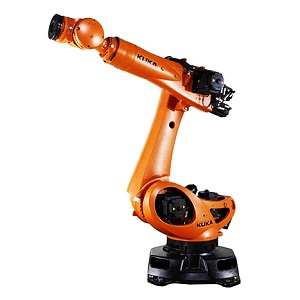 Obama said: "But, I gotta tell you that the days when you just being willing able to work hard and you can walk into a plant and suddenly there's going to be a job for you thirty years of forty years, that's just not going to be there for our kids. Because more and more, that stuff's gonna be automated. And if you go into a factory that kid is going to need to know computers, or is gonna need to know some science and some math because they're not gonna be picking anything up they're just going to be working on a keyboard."
Obama said: "But, I gotta tell you that the days when you just being willing able to work hard and you can walk into a plant and suddenly there's going to be a job for you thirty years of forty years, that's just not going to be there for our kids. Because more and more, that stuff's gonna be automated. And if you go into a factory that kid is going to need to know computers, or is gonna need to know some science and some math because they're not gonna be picking anything up they're just going to be working on a keyboard."
Further northwards, the people of Canada, when asked whether or not they were worried about a robot taking their job, were revealed to be the most anxious. A staggering 81 percent of Canadians believe that a robot will replace them. Their anxiety is not unwarranted by any means because a recent report (The Talented Mr. Robot: The Impact of Automation on Canada's Workforce ) by the Brookfield Institute for Innovation + Entrepreneurship (BII+E) at Ryerson University in Toronto revealed that 42 percent of Canadian workers are in industries that will inevitably be replaced by robotics.
Creig Lamb, an advisor from (BII+E) was quoted by IT Business Canada, saying: "Overall we discovered evidence from both sides of the debate. While these technologies can potentially threaten existing jobs, it is also important to recognize that they are also significant job creators that have the potential to improve productivity and raise overall living standards.
 So, both Obama's U.S. and Trudeau's Canada are certain that new industries are coming. Australia wants to ensure that their future working force is completely ready for the changes automation is bringing. Experts are warning that education must change soon to teach new skills to young students who will be living in an automated, Internet of Things future.
So, both Obama's U.S. and Trudeau's Canada are certain that new industries are coming. Australia wants to ensure that their future working force is completely ready for the changes automation is bringing. Experts are warning that education must change soon to teach new skills to young students who will be living in an automated, Internet of Things future.
Educators are calling for "technical and social" skill teaching in a STEM-focused (science, technology, engineering and mathematics) environment that teaches students how to solve real life problems. This is to try and eliminate the workforce that concerns itself with learning how to do repetitive tasks that have now been replaced by industrial robotics.
A youth advocate spoke to Australia's ABC news, saying: "We've had incredible education in this country, but there is no-one that genuinely really thinks it's fit for purpose now and into the future...Australia is, right now, not prepared. We could start working with 12-year-olds today. By the time they've done six years of high school and they're 18, we could genuinely have changed their trajectory if we focused on some of these education changes that need to happen and set them up and Australia up for a very different future."
Source: ABC News / Engineering Career
- Details
- Written by: Quintus Potgieter
What's the difference between a Bachelor of Arts degree and a pizza? A pizza can feed an entire family.
Yes, we've all heard the joke and been subjected to the scorn of students who believe their degrees are more superior when compared to humanities degrees. It is no secret; universities are filled with some students who want to degrade certain degrees because they believe they are doing the degree that will guarantee them a job in their respective industry.
McGraw-Hill Education is an educational content publisher, considered as one of the big three educational content providers in the world. They have conducted a study titled the 2016 Workforce Readiness Survey that investigated which industry's graduates exuded the most confidence for postgraduate employment prospects. The study saw McGraw-Hill surveying 1,360 American college students between March 2016 and April 206. They interviewed both undergraduates and postgraduates.
 Group president of U.S. education for McGraw-Hill Education said: "Every college graduate deserves to enter the workforce with the confidence that their degree was worth the investment."
Group president of U.S. education for McGraw-Hill Education said: "Every college graduate deserves to enter the workforce with the confidence that their degree was worth the investment."
Their study revealed that 73 percent of students who study science, technology, engineering and mathematics (STEM) degrees believe they are the most employable. The more worrying statistic, however, is that 40 percent of "college seniors" think their "college experience" is instrumental in landing them a job. It's 61 percent of liberal arts students that think their degrees are not worth much once they graduate from university.
When students were surveyed about how they think technology factors into their studies, 85 percent of students said using technology in a lecture and using it as a study tool would further equip them to be attractive to employers. It seems students are hungry for practical work in classes, and less theory.
Furthermore, when graduated alumni were quizzed about the use of technology, 96 percent of them conceded that practically working with tangible technology would definitely lead to better employment options in the current climate of employable graduates. The scary bit is, McGraw-Hill Education says that the number of students actively using "workplace-related" technology is sitting at 26 percent.
Now for the nitty gritty. 62 percent of students said that if they had the chance to choose different major without the heavy tuition fees, they would have chosen different majors.
So, whilst STEM graduates are confident that they are entering the workplace, we're not certain that these graduates have the technical know-how for the industries they're going into. However, engineering students - based on the study - are definitely still the most confident that they have a definite part to play as an employed member of society.
- Details
- Written by: Quintus Potgieter
If you're an engineering student currently studying towards your dream job, you've probably heard the question asked. When you make it into the industry, what is the dream company you'd want to work for? There's nothing wrong with setting your sights on some of the biggest engineering firms in the world because you never know when you might just get your big break. However, with thousands of fellow graduates getting their degrees and dreaming the same dreams, the industry is a tough one to compete in. Now, we have an idea of the most attractive engineering employers thanks to research group Universum. They have released their report titled The World's Most Attractive Employers 2016.
 The study was conducted on 267,084 engineering, business and IT students. The countries included in the report are: Australia, Brazil, Canada, China, France, Germany, India, Italy, Japan, Russia, the UK and the USA. The Executive Director of CNN Money, Lex Haris, spoke about the legitimacy of the report, saying: "This is a critical time for the global economy and today's grads are the future leaders that will determine its fate. We wanted to hear directly from them. And Universum's survey gives us direct access to thousands of students in a dozen countries.
The study was conducted on 267,084 engineering, business and IT students. The countries included in the report are: Australia, Brazil, Canada, China, France, Germany, India, Italy, Japan, Russia, the UK and the USA. The Executive Director of CNN Money, Lex Haris, spoke about the legitimacy of the report, saying: "This is a critical time for the global economy and today's grads are the future leaders that will determine its fate. We wanted to hear directly from them. And Universum's survey gives us direct access to thousands of students in a dozen countries.
So, we are looking at the millennials who are making their way into the respective engineering industries after graduating. Who do they want to work for? Here are the top 10 most attractive companies in engineering and information technology graduates' minds:
| Employer | 2015 | 2016 |
| 1 | 1 | |
| Microsoft | 2 | 2 |
| Apple | 3 | 3 |
| BMW Group | 4 | 4 |
| IBM | 6 | 5 |
| General Electric (GE) | 5 | 6 |
| Intel | 7 | 7 |
| Siemens | 9 | 8 |
| Samsung | 11 | 9 |
| Sony | 8 | 10 |
Analysts point out the interesting fact that energy companies are not attractive places for engineering students, as prospective places of employment. It's all about the tech companies in 2016, it seems. Analysts also say the results show that the millennials are aspiring to work for companies that seemingly have well-balanced work and lifestyle image. Interestingly, Google, Microsoft, Apple and BMW Group have retained their positions since last year, and IBM went up one position.
- Details
- Written by: Quintus Potgieter
You've got your honours in chemical engineering, you're a junior engineer-in-training, you have less than 4 years of experience at a firm and suddenly you get fired. What do you do? Do you try and get your masters in chemical engineering? Do you try and find a job unrelated to engineering? What can be done? This was a question recently posed to anonymous engineers on a social media site and the reflection of the engineers currently working in the industry could inspire you to take control of your engineering prospects whether you're currently looking for a job or not.
 This year has not been kind to chemical engineers. We've seen chemical engineers with BTech degrees begging for jobs on street corners in South Africa, and now isolated incidents of firings of junior engineers in Canada. Employment in these fields is obviously few and far between in 2016. Nonetheless, employment issues are not limited to a certain type of engineering around the world, there are more industries that are struggling to accommodate engineers and the salaries that they demand. It's enough to stress out an educated, employable engineer.
This year has not been kind to chemical engineers. We've seen chemical engineers with BTech degrees begging for jobs on street corners in South Africa, and now isolated incidents of firings of junior engineers in Canada. Employment in these fields is obviously few and far between in 2016. Nonetheless, employment issues are not limited to a certain type of engineering around the world, there are more industries that are struggling to accommodate engineers and the salaries that they demand. It's enough to stress out an educated, employable engineer.
However, fellow engineers have offered their two cents on what to do to keep pushing for the engineering jobs, to ensure that you snag that job:
- Update your resume
- Update your LinkedIn Profile
The Dean of Engineering at the Engineering Institute of Technology (EIT), Steve Mackay, talks about constructing an engineering résumé in the fifteenth episode of the Engineering News Network. Here is a summary with some quotes from the Dean that might strengthen your curriculum vitae:
1. Focus on the job: "Most people think they can use a generic résumé because they are applying for lots of jobs but that is a sure fire path to destruction."
2. Make it simple: "Use simple English, lay it out simply, you don't have to address it to the village idiot but by the same token make it simple and easy and reasonable."
3. Grammar and spelling must be 100%: "Try and look at the English and the spelling to make sure it reads well."
4. Avoid excessive information: "The twenty page CV is long since gone. Employers don't have time to read."
5. Lots of white space and include an executive summary: Mackay says the executive summary should be included because it would state why you think you're the right pick for the job. "Try and be specific, give real employers names...who actually exist...plus your time with them and the job you had and the reason why you left," he said." He further says that you should try and avoid the 'job hopping' approach where your CV shows that you've only spent a few months at a place of employment because that doesn't look good at all.
6. Search for jobs you really want: "It's pointless going for a higher paying job if you hate it. Try and focus on the jobs you are looking for, make sure it's aligned with you."
7. Business strengths: Mackay says it should include 'business wins' from previous employment. Stating what kind of successes you achieved.
8. Experience: "No matter how many qualifications you've got, if you don't have the experience that matches up with the qualifications, you've got a pretty tough job selling yourself. Experience plus qualifications...great match."
- Send your CV everywhere: You never know where you might get a response from
- Find other employment in the interim: This is specifically for engineers who are between jobs or struggling to find the dream engineering job of their dreams. Sometimes, getting a job unrelated to your industry could give you more skills that will assist you once you get into your dream job
- Be prepared to relocate: Engineering experts say that limiting yourself to your city or town is a bad idea, especially if the industry is slowing down in a particular area.
The skills shortages in the STEM industries continue to plague the industry. However, engineers are being influenced to broaden their skill sets in entrepreneurship and other studies so that they are instantly more attractive to businesses who might be interested in hiring them. Keeping a job in the industry means continually learning and applied newly learned skills. It's never too late to learn some new tricks, according to the engineering aforementioned engineering experts.
How do you remain employable in the engineering industry? Let us know in our comments section.
Source: Reddit / The Engineering News Network
- Details
- Written by: Quintus Potgieter
In March 2015 the Department of Trade and Industry in South Africa committed to funding a program that would see $67.6 million making its way into the industrial sector to create more black industrialists and engineers. The program was set up to further diversify the working force behind industrialists and engineers in the country.
Pricewaterhouse Coopers summarized the basic operations of the program. They wrote: "The concept of black industrialists refers to black people who are directly involved in the origination, creation, high-level ownership (>50%), management, control and operation of industrial enterprises that derive value from manufacturing goods and services on a large scale, thereby acting to unlock the productive potential of our country’s capital assets for massive local employment. Government is essentially looking for black industrialists who not only make long-term commitments to business but are also medium-to-long-term investors."
The sectors that will influence the employing of engineers in the country are as follows:
- Agro-processing
- Manufacturing
- Construction
- Clean technology
- Energy
- Mining
- Automotive components
 "We believe there is room for participation of many black entrepreneurs in the manufacturing sector as industrialists," said President of South Africa, Jacob Zuma. "They will be able to benefit from amongst others the incentives provided for in the industrial policy action plan and the host of manufacturing incentives that government provides. We believe the black industrialist policy framework is the right formula to transform the industrial landscape."
"We believe there is room for participation of many black entrepreneurs in the manufacturing sector as industrialists," said President of South Africa, Jacob Zuma. "They will be able to benefit from amongst others the incentives provided for in the industrial policy action plan and the host of manufacturing incentives that government provides. We believe the black industrialist policy framework is the right formula to transform the industrial landscape."
The program is geared towards encouraging black entrepreneurs to broaden their skill sets and find a future in engineering industries. It could also influence black engineers to pursue their dreams and get their competency in industries that are now seeing more job creation due to the move.
The Trade and Industry Deputy Minister, Mzwandile Masina, said that the program would ensure that more black leadership roles would be opened up in industries where black people are normally laborers and factory workers.
The diversification of employees in the STEM industry is an issue that South Africa takes seriously due to its unbalanced past.
- Details
- Written by: Quintus Potgieter
Chinese engineers have unveiled the world's longest and highest glass-bottom bridge in the Zhangjiajie Grand Canyon. The bridge serves as a skywalk from one side of the canyon to the other. And it's very strong. So strong that they decided to hold an event to show off its strength that included a journalist taking a sledgehammer to the glass walkway. To add to the anxiety of standing on a glass bridge, the engineers allowed a car to be driven on the glass surface.
The glass bridge is suspended 300 metres (984 feet) in the air and 430 metres (1,411 feet) long and 20 feet wide, suspended in Zhangjiajie's National Park. Chief engineer of the project, Ma Liang, said: "We use a  method of gluing together every panel to tighten the area between them. The thickness of every glass panel is 1.5 centimetres." They then took the Volvo XC90 SUV to the bridge with 11 passengers inside of it and drove it across the bridge, amounting to two tons. Some of the glass panels did shatter under the sledgehammering and the car driving over them but the panels are easily replaced. The chief design engineer on the project said that the bridge can withstand up to 100 MPH winds.
method of gluing together every panel to tighten the area between them. The thickness of every glass panel is 1.5 centimetres." They then took the Volvo XC90 SUV to the bridge with 11 passengers inside of it and drove it across the bridge, amounting to two tons. Some of the glass panels did shatter under the sledgehammering and the car driving over them but the panels are easily replaced. The chief design engineer on the project said that the bridge can withstand up to 100 MPH winds.
The bridge can take the weight of 800 people and will be opening in July. It was supposed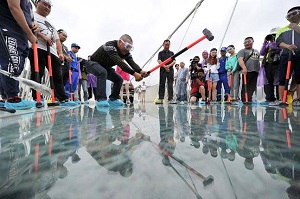 to be opened in May, however, weather conditions slowed the engineers down. The man behind the design of the bridge was Israeli designer, Haim Dotan. The bridge cost approximately $37.4 million to construct. Dotan said he wanted to build a bridge that was second in beauty to the nature that the area is known for. The film Avatar was filmed in the canyon.
to be opened in May, however, weather conditions slowed the engineers down. The man behind the design of the bridge was Israeli designer, Haim Dotan. The bridge cost approximately $37.4 million to construct. Dotan said he wanted to build a bridge that was second in beauty to the nature that the area is known for. The film Avatar was filmed in the canyon.
- Details
- Written by: Quintus Potgieter
Engineers have to work in teams. It's seldom that an engineer won't have to face a team dynamic at some point. The problem some people have is behaving accordingly when working with a team. You either do well at teamwork or you don't. The issue is, sometimes it is unavoidable. An engineer might end up working with other hot-headed engineers and suddenly a conflict arises. The shocking fact is that sometimes conflict might be a good thing. All you have to do is read Steve Jobs' biography to see how many times he clashed with his fellow engineering pals but look at Apple today. So yes, conflict can be good, but sometimes, conflict can derail an entire project.
 Scott Dietzen, the CEO of Pure Storage, a company that lends itself to all-flash solutions for demanding business and IT problems works with engineering-types. He recently wrote a Top 10 list of the top 10 things you need to do to be a successful engineer. It was published on Forbes' website. The first one was, an engineer should choose meaningful problems. The second one was, build or join an outstanding team. The question is, whether or not that outstanding team will survive a conflict that arises. Is conflict necessary in an 'outstanding' team? Is being part of a team the deciding factor in making someone a good engineer?
Scott Dietzen, the CEO of Pure Storage, a company that lends itself to all-flash solutions for demanding business and IT problems works with engineering-types. He recently wrote a Top 10 list of the top 10 things you need to do to be a successful engineer. It was published on Forbes' website. The first one was, an engineer should choose meaningful problems. The second one was, build or join an outstanding team. The question is, whether or not that outstanding team will survive a conflict that arises. Is conflict necessary in an 'outstanding' team? Is being part of a team the deciding factor in making someone a good engineer?
"It's an issue we have all the time and let's face it conflict is actually a good thing," says the Dean of Engineering at the Engineering Institute of Technology, Steve Mackay. He opens up about the conflict prevalent in the engineering industry in his video series the Engineering News Network. "Whenever you have a conflict in your team, the trick is always to deal with the problem as quickly as possible and also to try and focus on the issue, not the person. So, focus on the issue, try and deal with the issue, dissect it very carefully and try and listen carefully to all parties," he added. He also says the action and decision on a certain issue should be swift as well," he added.
Mackay ends his video off with a quote from Garth Brooks. The quote reads: "The greatest conflicts are not between two people but between one person and himself."
Paul J Breaux at the Southwest Research Insitute wrote a guide to handling conflict in engineering teams that was published in the IEEE Xplore Digital Library. He wrote: "Conflict must be managed both locally and globally to assure the success of any engineering organization in its target industry. How an engineering organization manages conflict can directly impact its success or failure." He alludes to the fact that ignoring conflict is not an option.
Dietzen's other principles one should stick to - if they want to be a good engineer - are:
- Work hard
- Tell your story well
- Be optimistic
- Be realistic
- Be contrarian
- Trust your instincts
- It's a marathon, not a sprint
- Have fun
- Details
- Written by: Quintus Potgieter
Engineering failures continue to plague African countries. Nigeria, Kenya, and Ghana have been under heavy scrutiny by both its people and its governments due to unsafe civil engineering practices that have left many dead in the last few years. In Nigeria, the lack of a structural engineer was one of the reasons given for the collapse of the Synagogue Church of All Nations that left 115 people dead. In Kenya, after the collapse of a six-storey building, the Deputy Governer of Nairobi said that seventy percent of buildings in the country are erected without proper certification. There is an engineering ethics problem in Africa, but nothing is being done to change it.
Ghanaian publication, Graphic Online, has berated their president, John Dramani Mahama for not doing anything about the annual floods that occur in Accura due to what the publication claims are 'engineering failures'. They wrote: "Mr President, we appeal to you apply the whip on your appointees, especially metropolitan, municipal and district chief executives who fail to use the statutory authority of their assemblies to compel the people to respect the laws."
 The engineering experts in Ghana have said that Accra is located in low-lying areas that are susceptible to flooding due to where the houses had been constructed in the first place. Furthermore, the draining systems are overcrowded with rubbish due to the residents who dump their rubbish into the drainage systems. The experts are saying a proper, effective drainage system is needed and then the city can address problems with litter and other issues. The publication thinks that underground drainage systems would be better for the area because open drain systems have been a target for the city to turn the drain into a landfill.
The engineering experts in Ghana have said that Accra is located in low-lying areas that are susceptible to flooding due to where the houses had been constructed in the first place. Furthermore, the draining systems are overcrowded with rubbish due to the residents who dump their rubbish into the drainage systems. The experts are saying a proper, effective drainage system is needed and then the city can address problems with litter and other issues. The publication thinks that underground drainage systems would be better for the area because open drain systems have been a target for the city to turn the drain into a landfill.
However, whoever first constructed the drains must have known that at some point there was going to be a problem with waste management. Why would they build it in any case? It becomes an ethics issue. From the process of awarding the contracts to construction companies to the unethical building of unsafe drainage networks and buildings around Africa.
The Dean of Engineering at the Engineering Institue of Technology, Steve Mackay has broached the topic of engineering ethics in the latest episode of his YouTube series, Engineering News Network. He said: "Ethics for engineers means engineers in the fulfillment of their professional duties shall uphold paramount the safety, health and welfare of their fellow citizens. That should be the highest possible consideration. It's a very expensive process if you want to rip the system but ethics is something that we as engineers and technical professionals have to do all the time."
Mackay outlines what the American Society of Civil Engineers believes are the fundamentals of ethical engineering. They're something that engineering entities in Africa should be focused on, but regrettably, are mostly ignoring.
- Hold safety, health and welfare of your fellow citizen in high regard
- Only work in areas where you are competent. Don't build bridges if you're an electronics design engineer for circuit boards. Focus on your areas of competence
- Be truthful and objective in everything you do. Be honest, tell the truth and be objective when you communicate and talk to others.
- Try and hold the highest professional standards in whatever you do. Don't take shortcuts, don't go for the cheap and nasty approach.
- Avoid conflicts of interest
- Ensure that your professional reputation is built on real, objective successes.
- Have zero tolerance for fraud, corruption, bribery. Say no.
- Always focus on enhancing your skills
- Details
- Written by: Quintus Potgieter
The world is moving at a fast pace in the twenty-first century. It's easy to have mastered the skills necessary to do a job, just to find yourself years down the road with a whole set of new skills you have to learn to remain employable to a company. It happens in many engineering industries due to how technology is constantly updated, software changes, hardware gets replaced, a robot takes the repetitive task you used to do. etcetera. You could even be fresh out of high school not knowing where to start on your road to becoming an engineer. Perhaps a MOOC could be your saving grace.
 MOOC is short for Massive Open Online Course. A free online course that is offered by top universities that introduce students to the type of work that tertiary level institutions teach or lets you brush up on your skills that you might require for a certain type of job. To find a list of MOOCs that specialize in Engineering, you can look at this website: MOOC LIST.
MOOC is short for Massive Open Online Course. A free online course that is offered by top universities that introduce students to the type of work that tertiary level institutions teach or lets you brush up on your skills that you might require for a certain type of job. To find a list of MOOCs that specialize in Engineering, you can look at this website: MOOC LIST.
In South Africa, students recently led a protest against the hiking of university admission fees, which quickly turned into an argument for free tertiary education. Now, The University of the Witswatersrand is offering three new massive open online courses that could get students started on building towards their engineering career. The University will be the first in Africa to offer MOOCs along with with the edX program. The three courses are:
- Research Methods: An Engineering Approach
- Results-Based Project Management: Monitoring and Evaluation
- System Dynamics for Health Sciences
Deputy Vice Chancellor at Wits says: "There is no doubt that there is dire need for more places at South African universities and for access to quality post-school training. Wits is proud to be the first African university on the edX platform, where we offer free online courses unique to South Africa."
It is a good move for the university that is trying to do everything it can to at least offer something to a country that is demanding tertiary education be made free and available to every student. And it is encouraging to see they are engineering-inspired courses. However, if you wanted to, you could also do some MOOCs that get you started through industry big-hitters like MIT, Stanford and more.
The University of New South Wales Australia has also launched their own MOOC, named Through Engineers' Eyes: Engineering Mechanics by Experiment Analysis and Design. The professors behind the MOOC say learning foundational engineering concepts is invaluable to the future studies that a student pursues.
- Details
- Written by: Quintus Potgieter
The engineering world wants hard-earned academic qualifications. It's no lie. A degree from a well-known, respected university can get you a job. However, do you have experience? This is where engineering apprenticeships come in. A student studying towards their Masters Engineering levels could see themselves taking part in an apprenticeship and equipping themselves with even more engineering skills which will lead to a lucrative career. Learning practical skills in an industry-specific apprenticeship will give you invaluable background information and skills that will equip you to go further and do more in the career you are building towards.
Engineering UK said in 2013 that there would be a demand for 69,000 qualified people in an engineering apprenticeship positions from the years 2010-2020. However, only 27,000 apprentices get their qualifications per year in the UK. The bigger picture is that by 2020, the UK expects to have seen 1.86 million jobs to have been made available in the engineering industry.
 Furthermore, there is the nasty business of seeing the gender imbalance statistics in engineering apprenticeships. The issue of men outnumbering women in engineering is unavoidable these days, and it obviously affects the apprenticeship numbers as well. The Young Women's Trust compiled a report that revealed there are 25 male apprentices in a program and only one female. They have also highlighted that men apprentices get paid more than female apprentices. Aecom has also recently warned the industry that the gender gap needs to be addressed due to less than 8% of manufacturing and engineering technology apprenticeship programs being given to women candidates. Those numbers were made public by the Department for Business, Innovation & Skills in the UK.
Furthermore, there is the nasty business of seeing the gender imbalance statistics in engineering apprenticeships. The issue of men outnumbering women in engineering is unavoidable these days, and it obviously affects the apprenticeship numbers as well. The Young Women's Trust compiled a report that revealed there are 25 male apprentices in a program and only one female. They have also highlighted that men apprentices get paid more than female apprentices. Aecom has also recently warned the industry that the gender gap needs to be addressed due to less than 8% of manufacturing and engineering technology apprenticeship programs being given to women candidates. Those numbers were made public by the Department for Business, Innovation & Skills in the UK.
Mark Gale, campaigns manager at Young Women's Trust said: "We know that for engineering there's such a massive skills requirement over the next few years. Currently, one in five schoolchildren would have to become an engineer to fill that gap." Their findings also showed that 16% of female apprentices were able to find work once completing their apprenticeships. "So despite all that investment in trying to get young women into science, technology, engineering and maths workplaces, it's not really having an impact."
There has been a renewed effort to include more women in the industry, especially in apprenticeship positions and to remove any discrimination that is prevalent in engineering workplaces. Now, that Britain has just gone through with an exit from the European Union, apprenticeships will be very important to the future skills teaching in the sector. An engineering firm called Dawson Shanahan has seen the need to train younger engineers so that longevity can be achieved.
Les Reeves, joint managing director of Dawson Shanahan said: "At a time when the engineering skills gap is continuing to grow, effectively training young people is key to preventing a decline in manufacturing in the UK and protecting our economy. Giving young people the skills they need to be at the cutting edge of our industry and the job market is vital for their future and for the future of engineering in the UK."
- Details
- Written by: Quintus Potgieter
A company named ShanghaiRanking Consultancy has conducted a study, singling out the best universities for different kinds of engineering. As expected, American universities posted high results, however, other countries were found to be climbing the ladder. The report's name was the Global Raking of Academic Subjects for 2016. The study evaluated more than 350 universities and colleges.
The research took a look at the top 30 universities per engineering qualification, but here we will just recap the top 5. However, the six universities mentioned the most in the study were:
- University of California, Berkeley
- Massachusetts Insitute of Technology (MIT)
- Stanford University
- ETH Zurich
- Ecole Polytechnique Federale de Lausanne
- Tsinghua University
Presumably, these are the universities that, if you studied engineering in, you could also look forward to a fruitful career in the engineering industry.
 Most of the statistical data that the results are generated from are from Elsevier, who is a world-leader in providing scientific, technical and medical information. Their Director of Content and Analytics M'hamed El Aisati said: "With students, researchers and other stakeholders taking a closer look at universities' performance and reputations, ShangaiRanking Consultancy is taking an important step by providing a specific ranking for engineering." He further went on to say it is a good ranking system so that the "competitive position" of the universities could be realized.
Most of the statistical data that the results are generated from are from Elsevier, who is a world-leader in providing scientific, technical and medical information. Their Director of Content and Analytics M'hamed El Aisati said: "With students, researchers and other stakeholders taking a closer look at universities' performance and reputations, ShangaiRanking Consultancy is taking an important step by providing a specific ranking for engineering." He further went on to say it is a good ranking system so that the "competitive position" of the universities could be realized.
Top 5 universities for chemical engineering
| Rank | Institution | Country |
| 1 | Massachusetts Insitute of Technology | United States |
| 2 | Stanford University | United States |
| 3 | University of California, Berkeley | United States |
| 4 | National University of Singapore | Singapore |
| 5 | University of Tokyo |
Japan |
- 31 U.S. universities in the top 100 for chemical engineering
Top 5 universities for civil engineering
| Rank | Institution | Country |
| 1 | Purdue University | United States |
| 2 | Technical University of Denmark | Denmark |
| 3 | Tsinghua University | China |
| 4 | Hong Kong Polytechnic University | China- Hong Kong |
| 5 | Tongji University | China |
- Civil engineering has the lowest number of universities ranked due to low output
Top 5 universities for electrical and electronic engineering
| Rank | Institution | Country |
| 1 | Stanford University | United States |
| 2 | Massachussets Institute of Technology (MIT) | United States |
| 3 | University of California, Berkeley | United States |
| 4 | Nanyang Technological University | Singapore |
| 5 | Georgia Institute of Technology | United States |
- 45 of the top 100 universities in electrical and electronic engineering are from the United States
- Total of 937 universities ranked.
Top 5 universities for energy science and engineering
| Rank | Institution | Country |
| 1 | Tsinghua University | China |
| 2 | Technical University of Denmark | Denmark |
| 3 | National University of Singapore | Singapore |
| 4 | Imperial College London | United Kingdom |
| 5 | Nanyang Technological University | Singapore |
Top 5 universities for mechanical engineering
| Rank | Institution | Country |
| 1 | Massachusetts Insitute of Technology | United States |
| 2 | Stanford University | United States |
| 3 | University of Cambridge | United Kingdom |
| 4 | Northwestern University | United States |
| 5 | Georgia Institute of Technology | United States |
- United States universities most prevalent
- United Kingdom also high-ranking
Source: Shangai Ranking
- Details
- Written by: Quintus Potgieter
Dartmouth College has made engineering history. The college has had more women than male graduates in engineering studies. Dartmouth, since 2015, had implemented a quota that saw at least 37 percent of engineering classes consisting of female students. In 2016, the number of female attendees stood at 54 percent of the class. Meaning, more women graduated than men. The United States sees only one-fifth of undergraduate engineering degrees going to women, but Dartmouth has just undercut that fact.
The students are graduating with their bachelor of arts in engineering. Dartmouth's engineering qualifications are not structured like other colleges or universities. Nonetheless, an interest in engineering in females has been a concern, so a bachelor of arts in engineering is progress. Out of 119 graduates in the course, 64 of those were women. The course is a four-year course and a fifth year is available that will focus more on the technical side of engineering. If they opt for the fifth year, they get their Bachelor of Engineering degrees.
The Dean of Engineering at Dartmouth, Joseph Helble, said: "We've been able to attract more students, and especially women, by letting them use engineering to solve real-world challenges. They quickly learn how their creativity and engineering skills can make a difference."
Last week we mentioned the study that outlined the gender gap and the motivations for women who leave engineering. Sexism within the industry was a major concern to the female engineers that took part in the study.
It was also revealed that women account for only 20 percent of undergraduate engineering degrees in the United States, and only 13 percent of the graduated workforce is female. Here's hoping Dartmouth's results cause a domino effect and start inspiring more women to get into engineering.
According to a recent study by CV-Library, 56.6% of 500 female engineers believe that engineering was still perceived to be a male-run industry. However, Randy Atkins, the director of communication for the National Academy of Engineering says this is all going to change. He said: "We're changing the image of engineering to a creative profession, a problem-solving profession. That is resonating with more women, helping them see engineering in a new way."
- Details
- Written by: Quintus Potgieter
Australia's performance in STEM (science, technology, engineering, mathematics) subjects has gone backwards, according to current Prime Minister of Australia, Malcolm Turnbull. The Prime Minister is saying that subjects in STEM fields should be made compulsory for all Australian students in high school, and should also be made a requirement when applying for university admittance. The warning comes in a time where Australia faces a shortage of professionals in STEM industries.
As a result, the Australian Academy of Science is in the process of implementing a ten-year plan to implement mathematics after the Australian Mathematical Sciences Insitute reported that only 14 percent of Australia's STEM degrees have maths as a prerequisite for students. Turnbull is wanting to change this up and enforce a stricter requirement for mathematics and other STEM-related subjects.
 The Australian Information Industry Association are so worried that they put the development of STEM subjects on the top of their list of priorities for the government that secures the federal election. PWC Australia also published their projections in a new report that says if the STEM career market adjusts down by one percent, Australia would be expecting an AUD57.4 billion loss in gross domestic product for the next year.
The Australian Information Industry Association are so worried that they put the development of STEM subjects on the top of their list of priorities for the government that secures the federal election. PWC Australia also published their projections in a new report that says if the STEM career market adjusts down by one percent, Australia would be expecting an AUD57.4 billion loss in gross domestic product for the next year.
"In my generation, you had to do maths or science to complete high school. We've got to get back to that and ensure that everyone is very literate in those STEM subjects. Science, maths, technology -- that's the future. More universities are requiring, and they should all require, in due course, that maths or science should be a prerequisite school subject to have completed going on to university. It's one of the areas we've gone backwards," Turnbull said.
The Sydney Morning Herald reported that the Labor Party is committing to injecting $400 million into developing scholarships to recruit graduates in STEM fields, and get them to assist with teaching STEM subjects. The Prime Minister believes more continued efforts to improve STEM fields will improve "digital literacy" in an era where that is perhaps one of the more important subjects.
Australia's Program for International Student Assessment also published a report that detailed that only 10 percent of Australian 15-year-olds are getting positive results in STEM subjects. Comparatively, 40 to 50 percent of 15-year-olds in Singapore get positive results.
- Details
- Written by: Quintus Potgieter
Engineering education needs a major rethink in India. The National Employability Report has revealed that less than 8 percent of engineering graduates in India are employable in "core engineering roles". The report indicated that the skills gap prevalent in the engineering industry in India is crippling the number of hires.
This is the second report of the year that has surveyed the engineering situation in the country. In January, a separate study revealed that 80% of the engineering graduates from India are unemployable. The numbers have become even worse since then.
 Varun Aggarwal, CTO of Aspiring Minds, the company behind the report said: "There are several problems with regard to employability in core engineering roles. We need to excite students about these jobs. Everyone's focus today is on IT. We want students to design and build things. We need emphasis on the basics, for instance, basic electrical engineering, basic concepts of mechanics and so on."
Varun Aggarwal, CTO of Aspiring Minds, the company behind the report said: "There are several problems with regard to employability in core engineering roles. We need to excite students about these jobs. Everyone's focus today is on IT. We want students to design and build things. We need emphasis on the basics, for instance, basic electrical engineering, basic concepts of mechanics and so on."
150,000 engineering graduates were surveyed for the report. The results revealed which branches of engineering were getting the least employment in India:
- Mechanical design engineer: 5.55% of graduates applicable
- Civil engineering: 6.48% of graduates applicable
- Chemical design engineer: 1.64% graduates applicable (lowest employability percentage of the report)
This compared to IT roles that scored considerably higher results:
- Software Engineer - IT services: 17.91% graduates applicable
- Hardware networking: 37.06% graduate applicable
"The science of manufacturing has moved way ahead but we continue to teach outdated concepts to students. For India to become the world's manufacturing hub, we need to lead from the front in our understanding of cutting edge methods, knowledge-driven management, and implementation capability," said Aggarwal.
News: NDTV
- Details
- Written by: Quintus Potgieter
Australia's Productivity Commission has spoken out against political parties who have encouraged students to pursue STEM subjects in school. The Commission says the $48 million project was "wrongheaded" and only added to the number of unemployed graduates in the country. The qualm is that the parties are trying to shape a market without letting it run its own course.
The Labor Party have said that STEM graduates are not doing well with regards to finding jobs in Australia. According to The Australian, the only STEM degree graduates that are faring well, are the ones in the following industries: Healthcare, Mining Engineering, and Surveying.
The Productivity Commission have outlined the issues graduates face today:
- Employment opportunities improve after three years of graduation
- 20% of graduates in natural and physical sciences have do not have jobs
- 1/4 of science degree holders say they are currently doing a job that does not require their degree
- Graduates who studied outside of the science realm utilize the skills and knowledge they gained during their degree, whereas science degree holders cannot say the same
- 30% of IT degree holders also report that they do not utilize their degree in their current jobs
 Are the engineers getting the jobs? Some might be, however, there is also a growing number of engineering PhD graduates that have reported the volatility of the job market in Australia right now.
Are the engineers getting the jobs? Some might be, however, there is also a growing number of engineering PhD graduates that have reported the volatility of the job market in Australia right now.
Elsewhere, at the U.S. News STEM Solutions Conference, the executive director of the Seattle Jobs initiative, John Kim, said that STEM is critically important for "living wage jobs" in the country. He said that positions are getting harder to fill in the STEM industries. The senior director of Replication and Strategic Partnerships at the Jane Addams Resource Corporation, Manny Rodriguez, said that 650,000 manufacturing jobs are not being filled, every year.
Governments should be filling the disconnects between what degrees are teaching and what jobs are requiring. If 650,000 manufacturing jobs go unfilled, but are available, then a university somewhere is teaching the wrong curriculum.
- Details
- Written by: Quintus Potgieter
At the risk of sounding like a broken record, we once again have to repeat that augmented reality is coming to engineering and in a big way. Recently, we have been talking about how the Microsoft Hololens could factor into engineering industries, specifically in construction. Now, engineering firm, Aecom, has confirmed our rumors. They will be running a "pilot project" that will see engineers using the "mixed-reality" goggles on construction projects.
Integrating mixed reality into construction sites means that you could see the finished product in front of you, how tall it is going to be, how wide it is going to be, what needs to be secured and will give you an  idea of what needs to happen before construction begins.
idea of what needs to happen before construction begins.
The president of Aecom, Stephen Kadenancy, said: "With this technology we can gain clarity earlier in the design review process than with 2D drawings or 3D models on screen, and team members in different locations, each wearing a headset, can simultaneously explore the same holographic projections."
The move by the engineering firm shows that there is a need for a holographic engineering design process that would improve a product or even building design before any actual work begins. Aecom will be integrating Trimble software which would allow the engineers to view structures on a table surface in augmented reality.
"Exploring complex structures in a mixed reality environment has a huge potential to accelerate the engineering design process," said Kadenancy. Perhaps your engineering career could be improved by the use of mixed reality applications, that could root out issues before they arise during the construction process.
Aecom will be testing the Hololens in London, Hong Kong, and Denver, according to V3.
- Details
- Written by: Quintus Potgieter
Computer science or computer engineering? What are the differences? Okay, another question: Computer science & engineering or Electrical & computer engineering? The difference could lead you into a different job.
The first difference, according to PayScale's College Salary Report of 2016, is the salary. Computer science & engineering students will make $69,100 in early career pay with a bachelor's. Electrical & computer engineering (ECE) will make $67,000 in early career pay with a bachelor's. So, pretty equal. The National Association of Colleges and Employers (NACE) reported that the salary for a bachelor's degree in computer science degrees  had reached $61,321 in their findings. However, that is for students who did only computer science and mathematics, without engineering involved. When engineering and computer science meet, salaries go up by $7,779.
had reached $61,321 in their findings. However, that is for students who did only computer science and mathematics, without engineering involved. When engineering and computer science meet, salaries go up by $7,779.
So why the significant pay gap? It's how the work is divided between computer science degrees without engineering and degrees that include it all. Below, are the different kinds of tasks the curriculum's might have by themselves. When they are combined, the starting salary goes up.
| Computer Science | Computer Engineering |
| Creating software that makes hardware run | Designing the physical hardware - Hardware based |
| Programming and developing | Physical electrical components |
| Write code | Electrical engineering and computer engineering go hand in hand |
| Design operating systems | System design |
PayScale also admitted that STEM careers were the highest earning in their College Salary Report.
However, the Computer Science Education Coalition says that students should strongly consider doing computer science focused degrees due to the amount of jobs that are now available to them.
"Not only does computer science provide every student foundational knowledge, it also leads to the highest-paying, fastest-growing jobs in the U.S. economy. There are currently over 500,000 open computing jobs, in every sector, from manufacturing to banking, from agriculture to healthcare, but only 50,000 computer science graduates a year," said the Computer Science Education Coalition.
Techcrunch says that students who had studied computer engineering and embedded systems degrees are making the transition into web and mobile development due to the impending move to the Internet of Things the world is making. Therefore, any computer-based degree is becoming more and more attractive, but focus on software creation (that computer science is synonymous for) is something that even the engineers are having to become proficient in.
- Details
- Written by: Quintus Potgieter
There is an engineering employment problem in Africa. We recently reported on South Africa engineering graduates that had taken to the streets with cardboard signs and begged passing motorists for jobs. The two graduates that had gained some social media fame both has their honours in chemical engineering. Now, in Kenya, a graduate with his bachelor of science in electrical engineering and a diploma in project management has begged for a job as well.
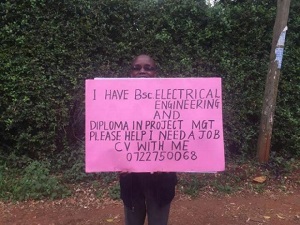 His name is Gilbert Mutai. He received his BSc through Kenya's Technical University and is now unable to find work after graduating.
His name is Gilbert Mutai. He received his BSc through Kenya's Technical University and is now unable to find work after graduating.
The World Economic Forum, in a 2014 report, said that South Africa had the third highest unemployment rate in the world between the ages of 15 and 24.
The executive director of the SA Graduate Employers Association, Cathy Sims, spoke to IOL about the government's intention to work more closely on graduate programmes that could lead to employment for graduates. She said: "I certainly, having worked in the sector for the last 20 years, have seen a significant increase in employers actively pursuing entry level candidates. We have been measuring the growth of demand for graduates in our research since 2007 and the demand has more than doubled in eight years at our member organisations. On the other hand, there are also many companies that need trained technical professionals - be they engineers, accountants or lawyers. They will typically be placed into a position, provided with on-the-job training and fill meaningful roles."
The problem is not limited to Africa, not by any means.
The Chartered Institute of Personnel and Development (CIPD) in the UK conducted a study that included engineering graduates. They find that 58.8 percent of UK graduates had found work during the 2008 recession...but in non-graduate jobs. This means they worked in retail or something similar, an industry that did not require their degree.
"There's a need for universities to give these groups more targeted support in making the transition from study to employment. And employers need to change their perceptions to avoid squandering talent," said Sally Hunt, general secretary of the University and College Union in the UK. [Via: Telegraph]
Finding employment in the engineering industry is becoming harder and harder. What experts are instructing graduates to do is, is equip themselves with non-engineering skills like entrepreneurship, writing skills and the likes so that they are more attractive to employers. However, if a Kenyan student who has both his BSc in electrical engineering and a diploma in project management can't get a job, there is a definite problem that needs to be addressed in the country itself.
Source: Hivisasa
- Details
- Written by: Quintus Potgieter
As the Internet of Things grows and grows, it continues to contribute to the fourth industrial revolution, connecting appliances all over the world to networks that are vulnerable to hackers. Getting your Masters of Science in Cybersecurity Engineering could be getting you a good looking salary in the world of today. Furthermore, professionals are encouraging students to consider going into cybersecurity due to the skills gap prevalent in workplaces today.
 Shockingly, according to the National Cyber Security Alliance of the U.S., 67% of millennial men and 77% of women say that they were never told what the word 'cybersecurity' meant and were never educated on the career prospects in cybersecurity when they were in middle or high school.
Shockingly, according to the National Cyber Security Alliance of the U.S., 67% of millennial men and 77% of women say that they were never told what the word 'cybersecurity' meant and were never educated on the career prospects in cybersecurity when they were in middle or high school.
IBM estimates that in 2015, there were 4,000 cyber attacks and $18 billion in credit card fraud. IBM's Watson (the company's cognitive - almost life like - computing system) will be instrumental in fighting cyber crime. IBM has launched 'Watson for Cyber Security' and will be tested out at eight different universities in the United States. IBM is hoping this will fill the current skills gap with the application that will scan through text to find threats lurking in areas of sites on the internet.
The U.S. Bureau of Labor Statistics says that security analysts positions will grow by 18% in the next year. The annual salary that they can look forward to would be $90,120 annual with a bachelor's degree. Not too shabby.
"Employers look for and typically require around five years of experience for security engineers but potential employees find experience hard to come by since there are few internships," Amy Justice, senior security and compliance consultant at SDGblue, told Lane Report.
"The demand for cybersecurity has increased greatly in the last few years. There have been a large number of public data breaches...There are also a lot of rumors about banking breaches. The next big hacking targets will be cars, medical devices, and home security devices. Everything on the internet can be hacked," said James Walden, associate professor and director of the Center for Information Security at Northern Kentucky University.
Check out these cybersecurity courses:
John Hopkins Engineering Master of Science in Cybersecurity
Here are more links to courses for Masters Degrees in cybersecurity:
- Details
- Written by: Quintus Potgieter
Good news for engineers in the automotive industry! General Motors is rumored to be adding 1,000 engineering jobs in Ontario, Canada. These engineers will be involved in developing self-driving technology, cloud-connected car technology, and other projects GM might be busy with. An unidentified source - who spoke to the Globe and Mail - confirmed the rumors saying that the Oshawa branch would get 300 new engineering jobs, whilst the Markham branch would get 700 new jobs, all in Ontario.
Time to move to Ontario, it seems. The company was pushed for comment, however, all they replied with was: "On June 10th, GM Canada will be making an announcement at our Canadian Engineering Centre." If the rumors are true, it is good news for qualified engineers who are looking for work in the automotive field. The Prime Minister Justin Trudeau will be attending the ceremony, so it's a big deal. It is a particularly important announcement due to the fact that GM has been spending some of its $750 million in research and development money in getting more engineers on board.

The company currently employs 9,000 people in Canada.
Further afield, in the United States, it was reported that only 38,000 new jobs were made available in April, meaning that engineering jobs were few and far between last month. However, one branch of engineering was projected to do very well in the upcoming years. The New York State Department of Labor said that electronics engineers would see an employment increase of 2.8% between 2010 and 2022. This translates to 20 annual openings a year, in New York alone.
Elsewhere in the United States, San Diego is need of civil engineers. At a recent conference named Emerging Careers for 2016, the state expressed its need for the engineers. Brooke Emery, assistant project manager at the California Department of Transportation said: "Civil engineers will be needed to manage projects to rebuild bridges, repair roads, ports, railways, and upgrade levees and dams. Quality of life and safeguarding the environment are important and will continue to become more prominent. As the population continues to grow, civil engineers will also be needed to make the infrastructure multimodal and more suitable to mass transit."
Source: Democrat & Chronicle / CBC News
- Details
- Written by: Quintus Potgieter
The World Economic Forum (WEF) released their 'Global Challenge Insight Report' document that dealt with the future of jobs in the world and how jobs would be changing from present day to 2022. The report was named The Future of Jobs: Employment, Skills and Workforce Strategy for the Fourth Industrial Revolution.
"Today, we are at the beginning of a Fourth Industrial Revolution. Developments in genetics, artificial intelligence, robotics, nanotechnology, 3D printing, and biotechnology, to name just a few...While the impending change holds great promise, the patterns of consumption, production and employment created by it also pose major challenges requiring proactive adaptation by corporations, governments, and individuals," said the Founder and Executive Chairman of the World Economic Forum, Klaus Schwab.

As a result, it is the World Economic Forum's opinion that by 2020, employment opportunities in several industries will no longer exist. Their research concluded that in the next 4 years, being a creative thinker, despite the industry you work in, will get you hired. Currently, being creative is 10th on the list of desirable traits in workers in several industries as defined by the WEF. The World Economic Forum believes it will be number 3 by 2020. Complex problem solving will be the number 1 skill wanted when doing a job in 2020. Hey, engineers, that's you.
Which degrees should you be studying to ensure that you are going to stay relevant in the fourth industrial revolution where so many repetitive tasks are being done by automated means? A study by the National Association of Colleges and Employers (NACE) in the United States cleared up which degrees might survive the test of time, or at least until 2022. They delivered questionnaires to college placement agencies and asked for feedback in terms of which degrees were getting the most hired in Bachelor's, Master's and Doctorate levels. Here is what they got back:
Top Degrees in Demand (Bachelor's Degree Level):
- Accounting
- Computer Science
- Finance
- Business Administration/Mgmt.
- Mechanical Engineering
- Information Sciences & Systems
- Electrical Engineering
- Logistics/Supply Chain
- Economics
- Marketing
Top Degrees in Demand (Master's Level Degree Level):
- Computer Science
- Electrical Engineering
- Mechanical Engineering
- Information Sciences & Systems
- M.B.A
- Accounting
- Finance
- Software Applications
- Computer Engineering
- Management Information Systems
Top Degrees in Demand (Doctorate Degree Level)
- Electrical Engineering
- Computer Science
- Software Engineering
- Computer Engineering
- Mechanical Engineering
- Chemical Engineering
- Maths/Statistics
- Systems Engineering
- Industrial/Manufacturing Engineering
- Physics
So, budding engineers. Probably a good idea to get your doctorate in electrical, computer, software, computer, mechanical, chemical, systems or industrial engineering, eh? The results show a pretty good picture in terms of degrees that are currently involved in industries where the fourth industrial revolution is actively infiltrating. You want to be the one working directly inside the fourth industrial revolution and not being one of the victims it replaces.
- Details
- Written by: Quintus Potgieter
In a recent study conducted by academic contributors to a website called Econotimes, it was found that in 80% of countries, girls experience negative emotions towards mathematics. The researchers claim females at a young age have anxiety towards STEM subjects and as a result, we see less and less female engineers in the world.
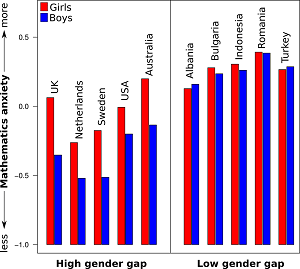
The research has been conducted since 2012 and now the results have been published in a journal titled: Countries with Higher Levels of Gender Equality Show Larger National Sex Differences in Mathematics Anxiety and Relatively Lower Parental Mathematics Valuation for Girls. The researchers put their findings into a graph (shown to the left of this article) that shows anxiety - in red - and where the most anxious students are, geographically.
The UK, the Netherlands, Sweden, the United States and Australia showed moderate levels of mathematics anxiety in girls. These are countries that have some of the greatest universities for engineering in the world. Meaning, if girls are anxious about mathematics at a young age, the chances of them getting into STEM careers later on in life is less likely.
"Most importantly and contra predictions, we showed that economically developed and more gender equal countries have a lower overall level of mathematics anxiety, and yet a larger national sex difference in mathematics anxiety relative to less developed countries," the researchers wrote in their journal.
The study was conducted with 761,655 respondents who were all 15 years old. If curriculums are altered so that less mathematics anxiety happens, perhaps equalizing the gender gap in engineering could actually happen.
Worryingly, female engineers are finding it difficult to join the workforce, especially in Australia. A study conducted by Engineers Australia showed that "half of female graduates in engineering do not enter the workforce." The other 50% that do enter the workforce reportedly leave the industry after 10 years. More shockingly, Engineers Australia says that less than 1% of Australian women past the age of 50 years old are currently working in the industry.
What is being done to bridge gender gaps in engineering?
The Mandarin writes that last year, 30% of engineers in Malaysia were women. Comparatively, the figure used to stand at 6% of engineers.
However, it all begins in the classroom at an early age. Can mathematics anxiety be minimized so that both males and females could look forward to STEM careers after school and university? Let us know what you think in the comments section.
- Details
- Written by: Quintus Potgieter
32,000 Australian students opted to study overseas in 2014. These statistics were compiled by a group named Universities Australia. The study showed that from 2008 to 2014 the number of students who left Australia to study overseas grew from 15,058 students to 31,912 students. Where are they going? The report claims a lot do go to English-speaking countries but China has been a draw card for some.
The main destinations were listed
- The United States
- China
- Britain
- Canada
- Japan
 Scott Sheperd, deputy vice-chancellor at the Queensland University of Technology said: "Instead of going for an entire semester, a lot of students are now heading overseas for two to four-week programs. Students also benefit from the exposure to new experiences and increasing their resilience. And that shows to employers that they have a broader perspective."
Scott Sheperd, deputy vice-chancellor at the Queensland University of Technology said: "Instead of going for an entire semester, a lot of students are now heading overseas for two to four-week programs. Students also benefit from the exposure to new experiences and increasing their resilience. And that shows to employers that they have a broader perspective."
The Australian publication further showed students from 34 of the 39 Australian universities took part in "learning abroad" studies. The research showed that 30 percent of the students from these universities went to Asia. One of the researchers, Rob Lawrence, said that out of 6,800 he conducted research on the reasons given for studying abroad was because students didn't want a "run-of-the-mill degree".
An electrical engineering student, Matt Rowe, said studying abroad was good for him. He said: "It gives you the confidence to follow your interests, to seek adventure and to be excited by the ocean of experiences just waiting for you."
Are engineering students studying abroad and then snatching the degrees from the students that were actually born in the country? The Americans say: yes.
"It's a big concern: We bring a lot of students here, we train them, and then they leave," said Vince Bertram, President, and CEO of Project Lead The Way. According to research from the National Science Foundation and National Institutes of Health, the amount of U.S. citizens getting graduate degrees in science and engineering fell by 5 percent in 2014. The groups drew parallels with how many temporary visas were granted, which spiked by 35 percent in those years.
"We have to continue to expand our domestic pipeline of students going into these areas. We have to continue to grow our own talent, and it doesn't happen at the graduate level. It's going to occur at elementary and middle school, not trying to convince students once they're in high school that these opportunities are available to them," Bertram said.
- Details
- Written by: Quintus Potgieter
What are the top universities to study at if you are serious about having a career in engineering? What are the top notch institutes that would definitely get you employment in the engineering industry? Times Higher Education says they have come up with the definitive top 10 list. They have ranked them according to their readiness to produce premium engineering education.
Unsurprisingly, the top 10 list names a lot of universities that have impeccable research and development laboratories where some of the world's new products are built in by alumni and student engineers alike.
10 - Carnegie Mellon University: U.S.A
CMU in Pittsburgh, Pennsylvania are on a list on the World Economic Forum's Global University Leaders Forum.
9 - Imperial College London: UK
According to University Herald, Imperial College London is the "highest ranking university in London in the engineering and technology domain."
8 - ETH Zurich: Switzerland
Named one of the best universities in the world for robotics engineering education. Researchers at the institute have recently made a walking dog robot. Marco Hutter, the engineer behind the dog, said: "In the field of robotics, ETH is one of the best universities in the world – if not the best."
7 - Princeton University: U.S.A
6 - University of Oxford: UK
One of the most famous universities in the world. Recently, they have started hiring additive manufacturing specialists to cement them as a university with the latest in 3D printing technology. The university has a world-class reputation with students across all faculties.
5 - University of California: Berkeley, U.S.A
When you think about Silicon Valley, you think about the engineers that come from University of California. A neuroscientist from the university has recently won an early-career award, showing that the university equips young minds with the tools to achieve.
4 - University of Cambridge: UK
Recently, James Dyson, the head of the Dyson company opened the Dyson Centre for Engineering Design at Cambridge. The centre cost $11.6 million to build. It furthers Cambridge as a university that will be bringing the best-designed products that will be engineered and ready for the mass consumer market.
3 - Massachusetts Institue of Technology (MIT): U.S.A
A discussion of best universities cannot be had without the mention of MIT. The university has a good rapport with big aerospace company NASA. Their robotics education has spawned some of the best robotics testings in the world, and they are currently testing out the robots that NASA intends to send to Mars in 2018. The university also recently showed off robots that can be swallowed by humans so that they can retrieve items that might have been accidentally ingested.
2- California Institute of Technology AKA CalTech: USA
Engineers from this university are so confident in their engineering designs that they are accusing Apple of stealing their WiFi technology . The engineers claim they have a patent on the technology that Apple is using in their devices.
1 - Stanford University: U.S.A
Our personal favourite on this site. Some of the most impressive feats of engineering are reported from this university. They boast the greatest engineering research and development. Notably, their biomedical engineering projects are constantly redefining what is possible with medicine and engineering. Recently, researchers developed a home-based urine test that can diagnose a patient with almost nothing but a smartphone.
- Details
- Written by: Quintus Potgieter
Engineering careers are far and few between in the United States. The Labor Department in the country said that only 38,000 jobs across all industries were added in the last month which would be the lowest growth numbers in the last five and a half years.
The industries that particularly struggled to employ any new employees were engineering fields. Construction, manufacturing, oil and gas industries saw the biggest losses in May. Capital Economics Chief economist, Paul Ashworth said: "The weakness in May's payrolls was widespread. Manufacturing lost 10,000 jobs, construction shed 15,000 jobs and temporary help fell by 21,000. A June rate hike from the Fed is now very unlikely."
 "The bad news with this jobs report is that if the U.S. slows, that means Dallas will slow, which has really been the anchor for growth. The parts of Texas that have been growing the fastest and doing well despite the energy bust will be impacted by any slowing of the national economy," said Pia Orrenius, an economist at the Dallas Federal Reserve, talking to the Houston Chronicle.
"The bad news with this jobs report is that if the U.S. slows, that means Dallas will slow, which has really been the anchor for growth. The parts of Texas that have been growing the fastest and doing well despite the energy bust will be impacted by any slowing of the national economy," said Pia Orrenius, an economist at the Dallas Federal Reserve, talking to the Houston Chronicle.
The data gathered suggests that 207,000 jobs have been lost in America since September 2014. Mining and logging industries recently contributed 10,000 losses to that number.
However, TechServe Alliance, a company that offers research into the IT & Engineering Staffing and Solutions industry have said that engineering employment improved across the board by 0.1 percent in April. The researchers pointed out that from April 2015 to April 2016 engineering employment in the United States actually did increase by 0.8 percent, but adding only 21,100 engineering jobs.
"IT employment continued its steady but unremarkable growth in April. On the engineering side, we saw the return of modest growth after ticking down the prior month. While there remains an air of uncertainty, we continue to see hiring in many technical skills sets continue at a solid pace. Employers and the employment market are not monolithic. While we are seeing weak demand in some industries, other industries such as management and technical consulting are showing remarkable strength," said Mark Roberts, CEO of TechServe Alliance.
